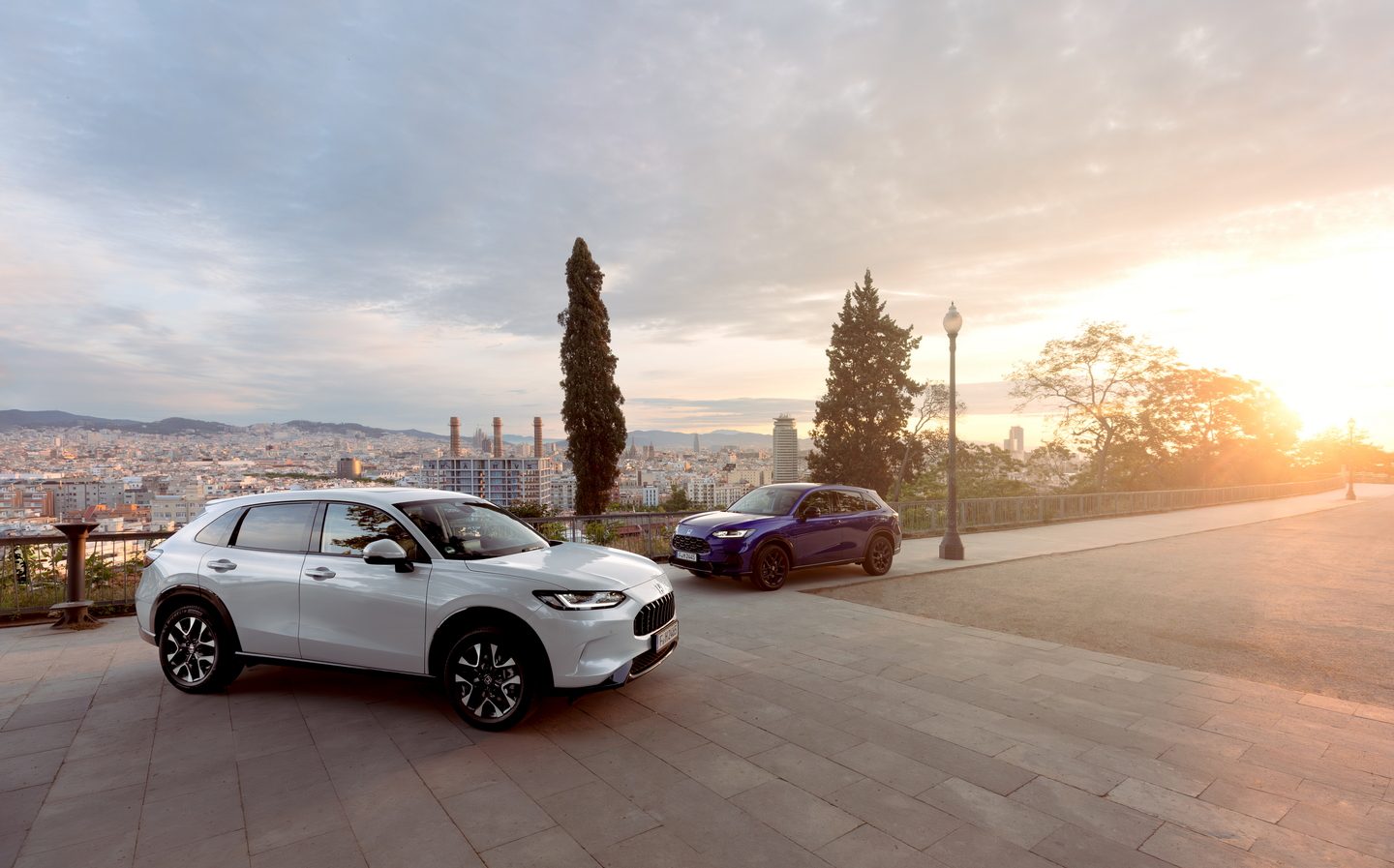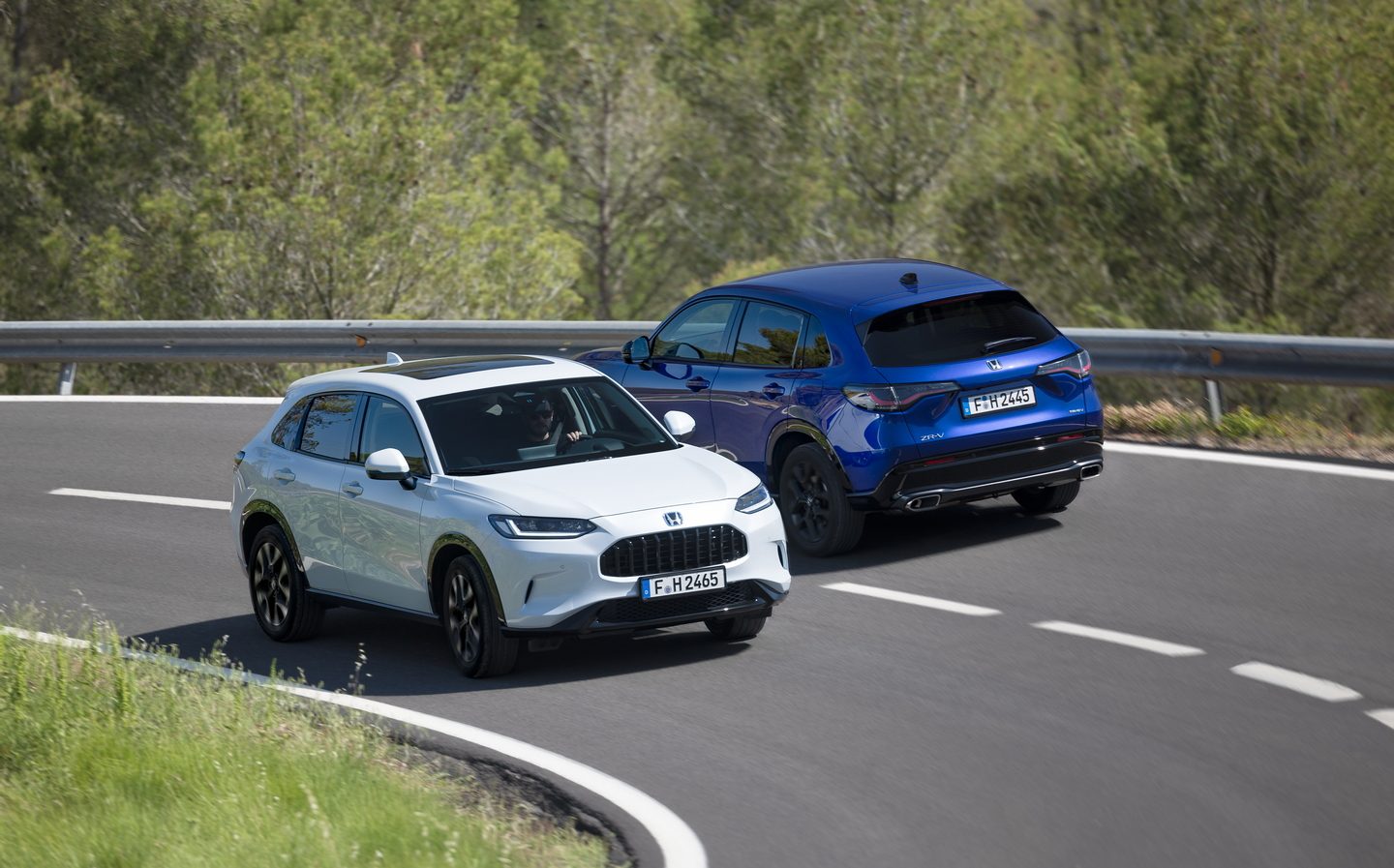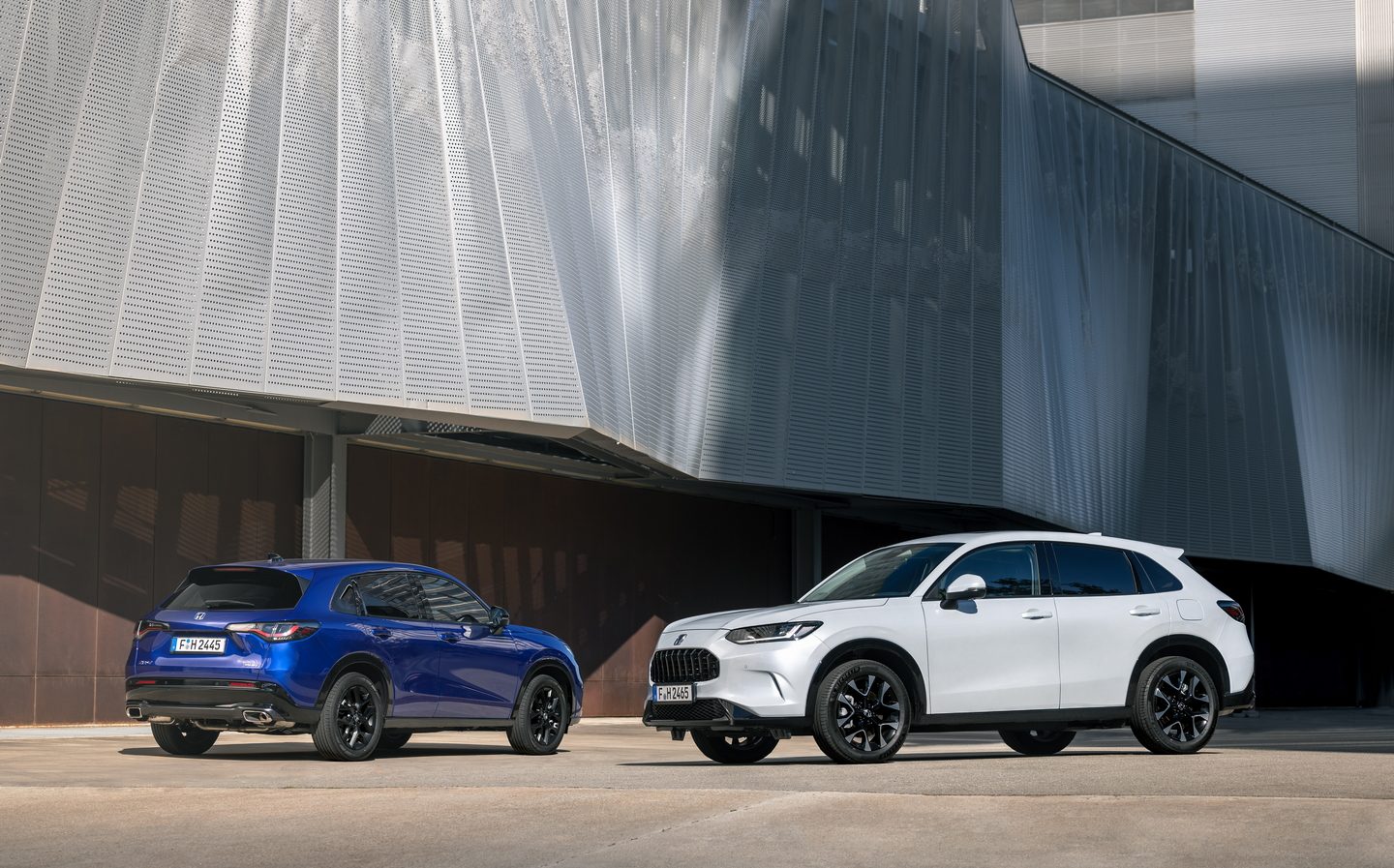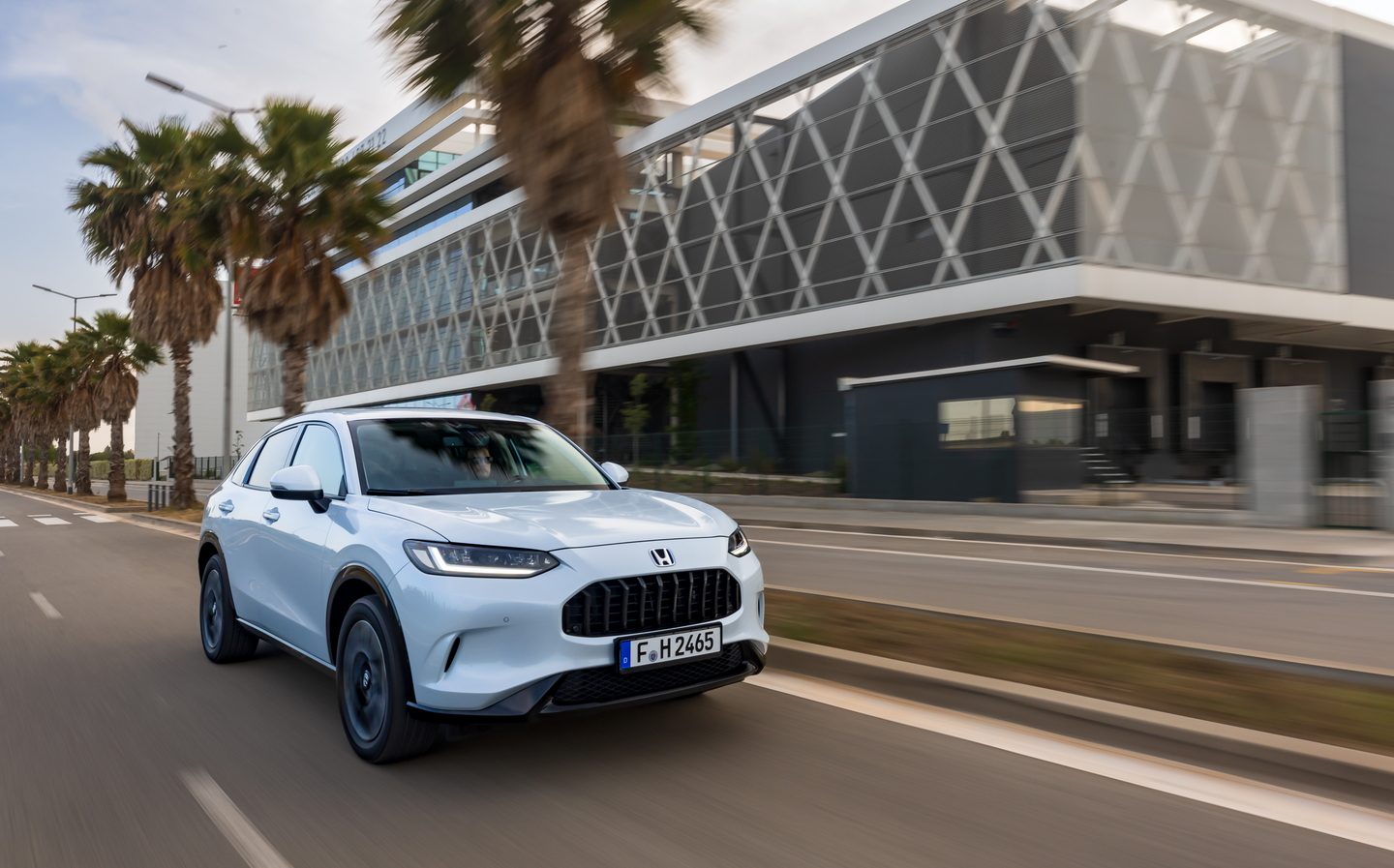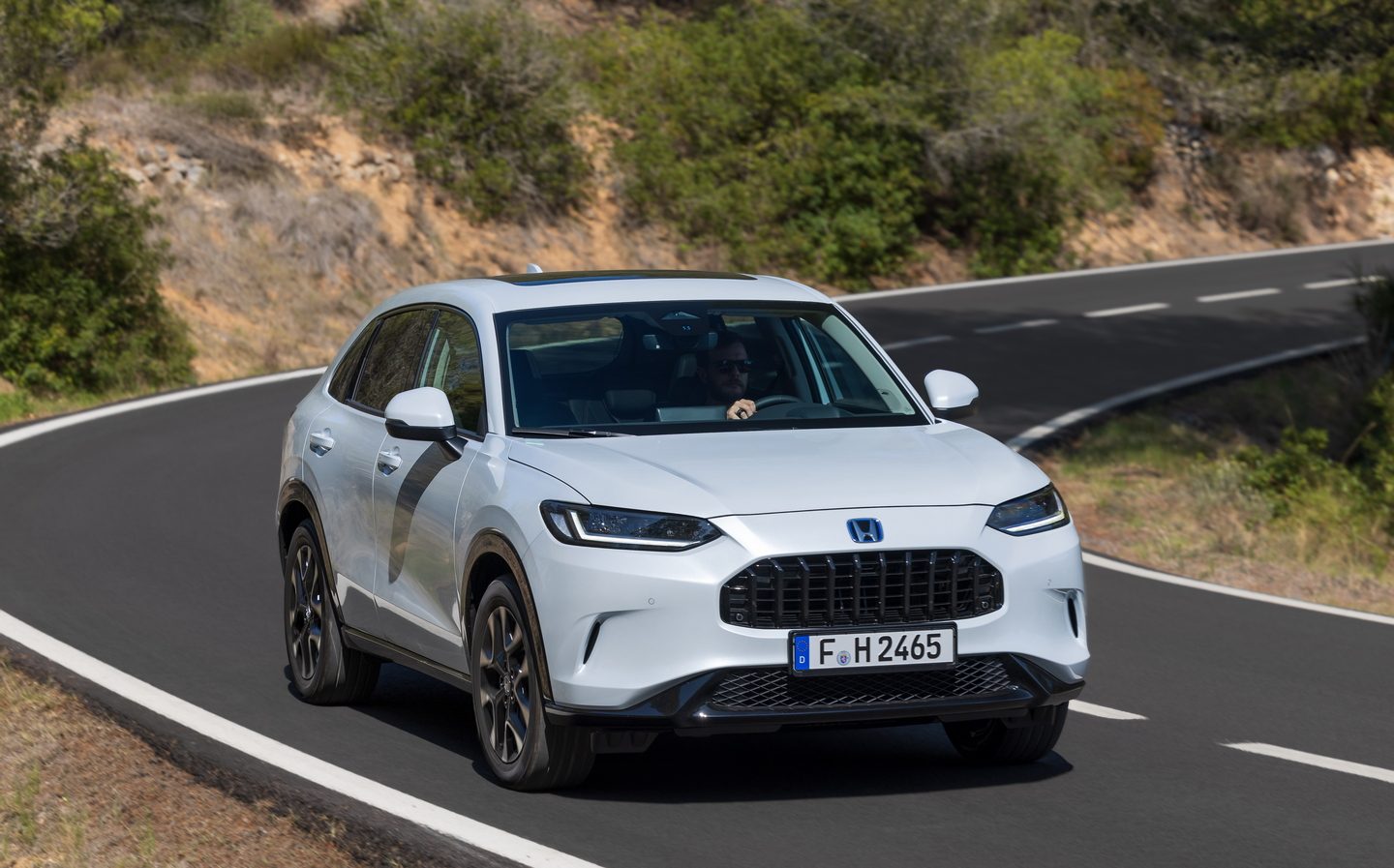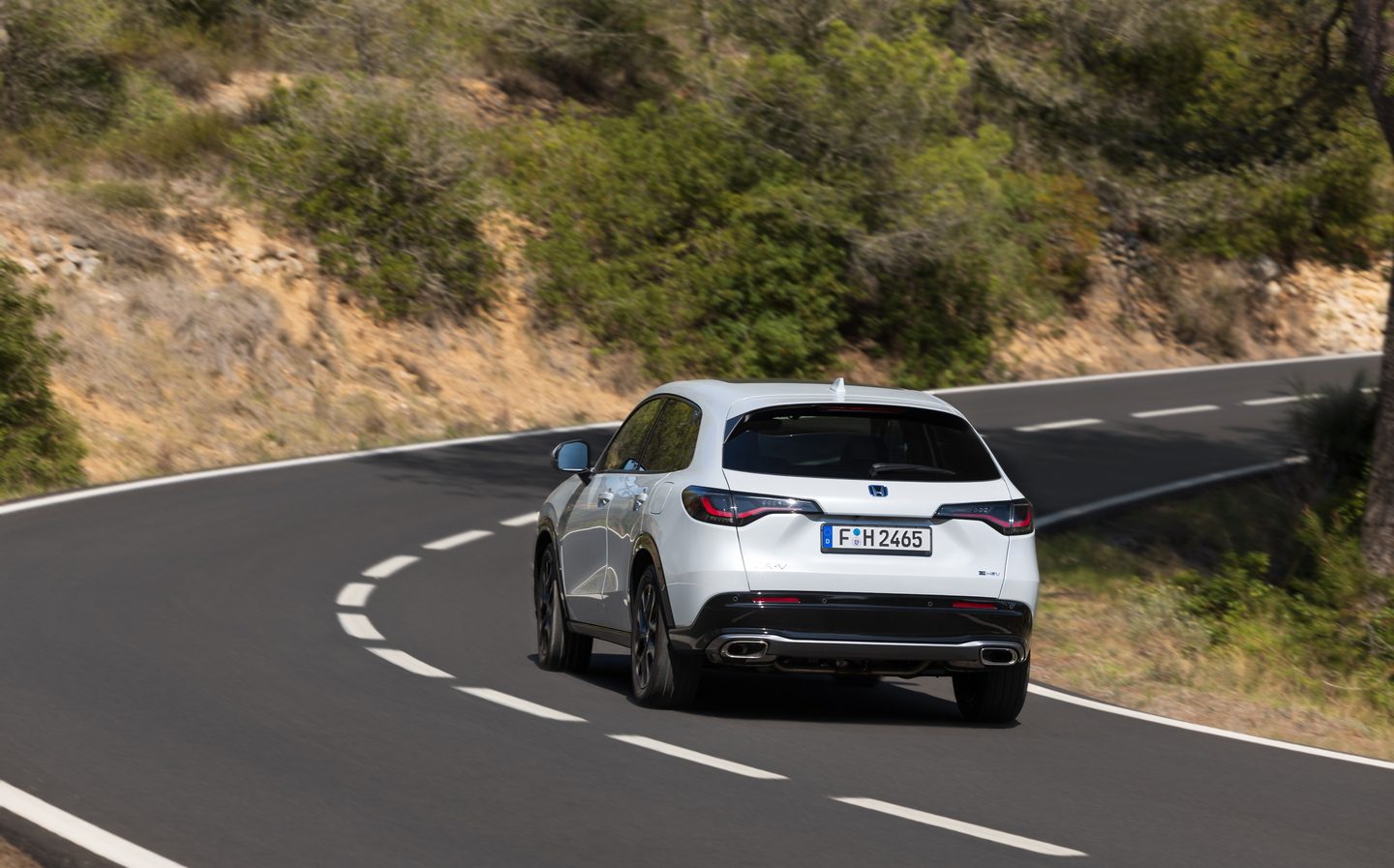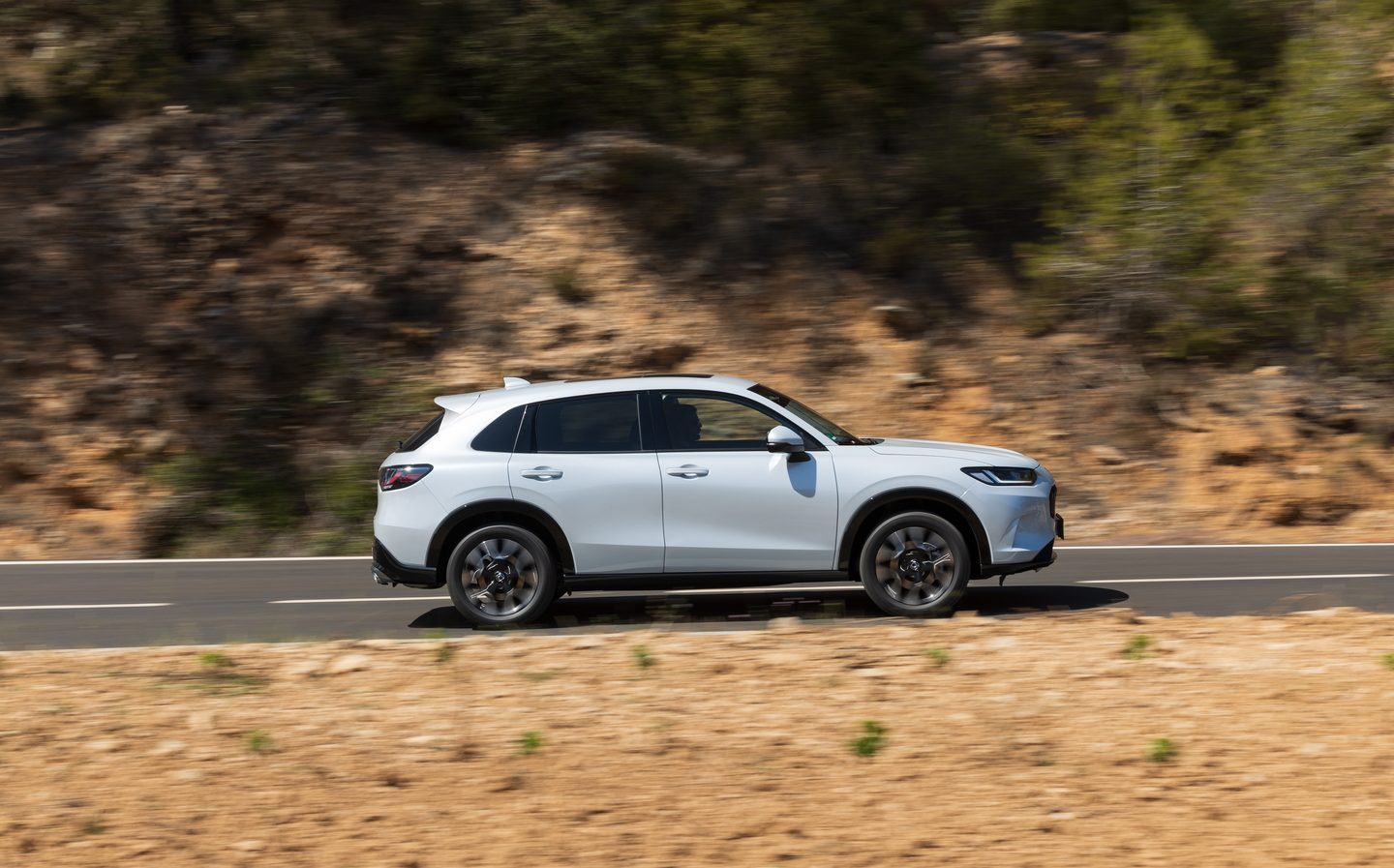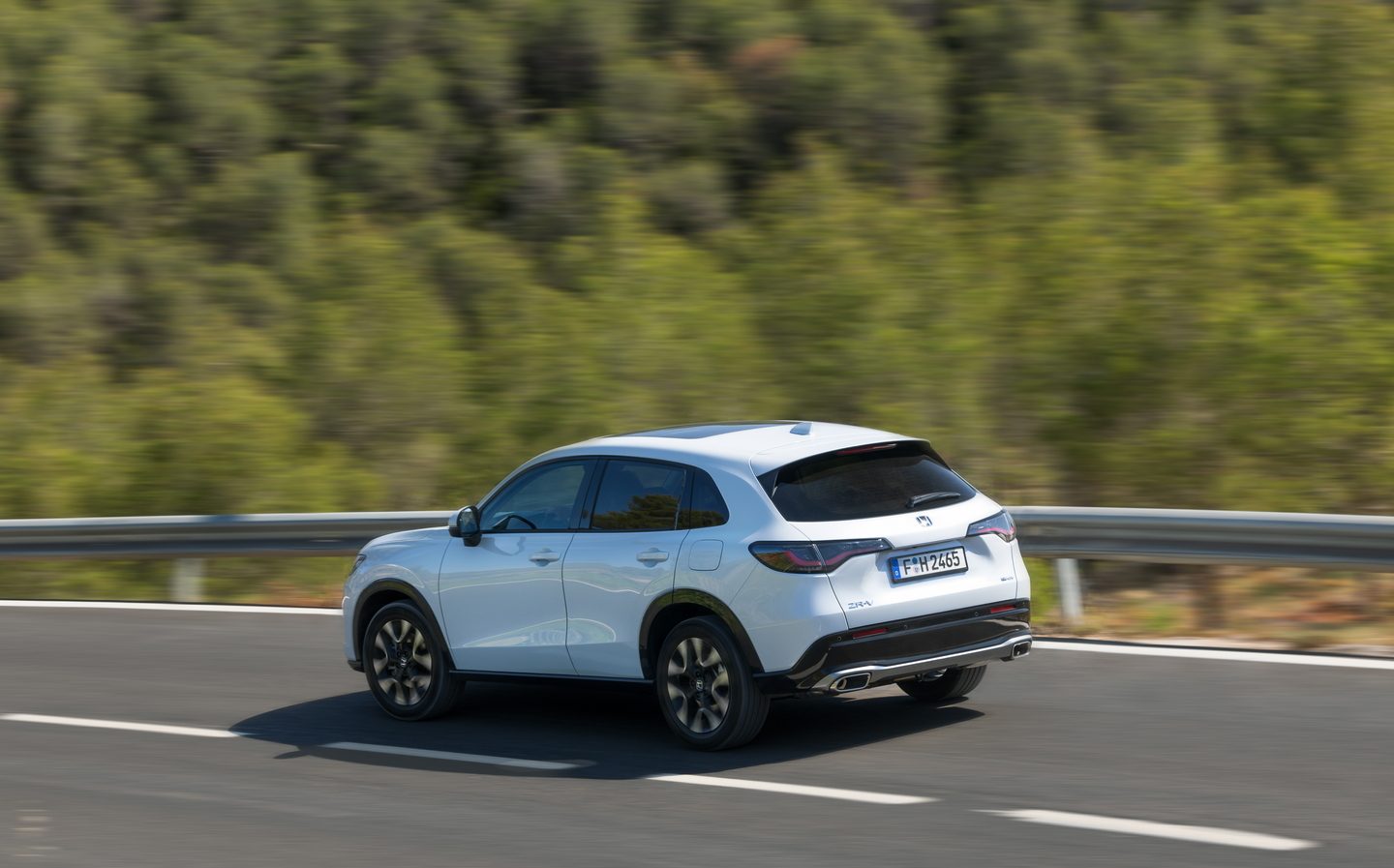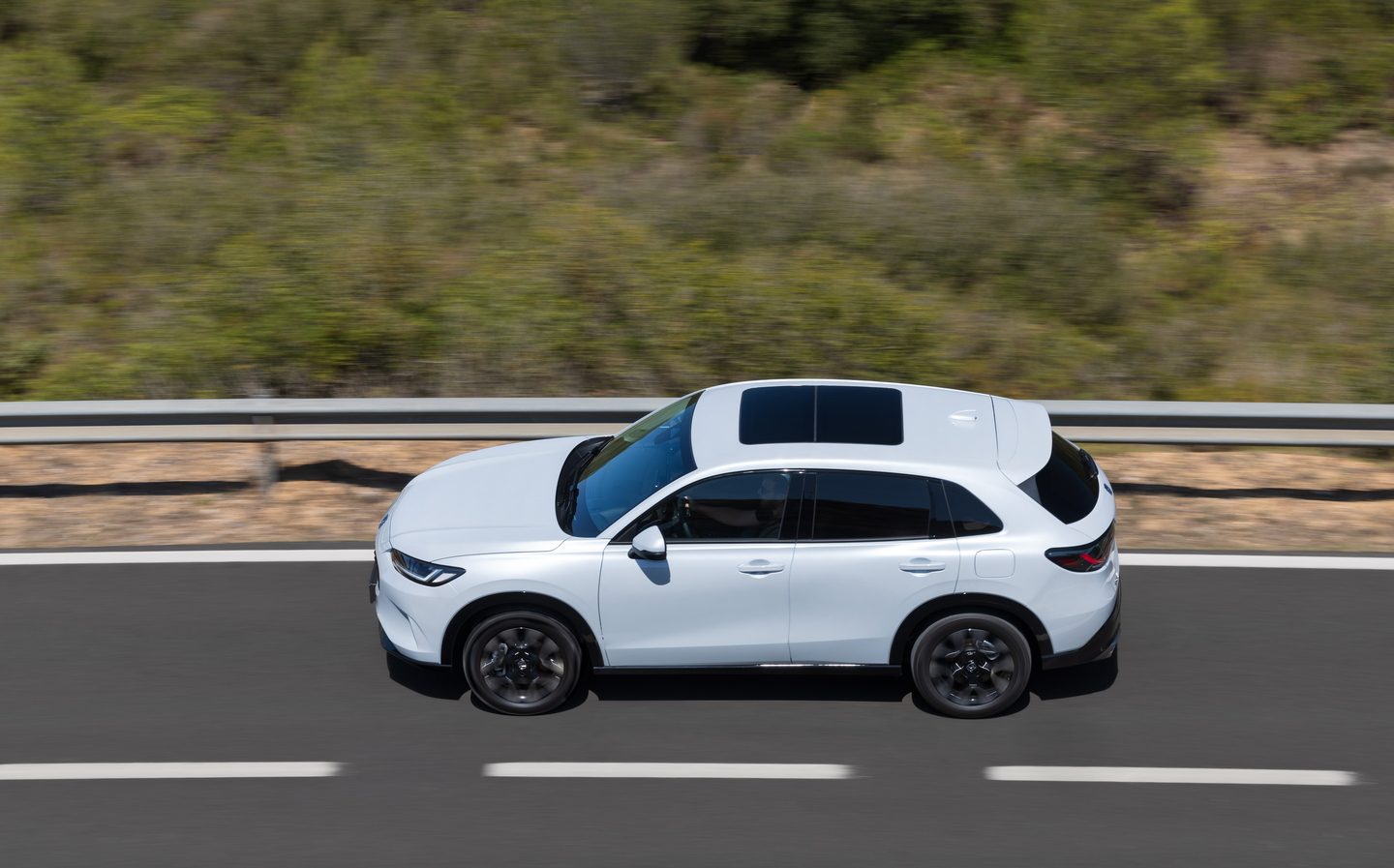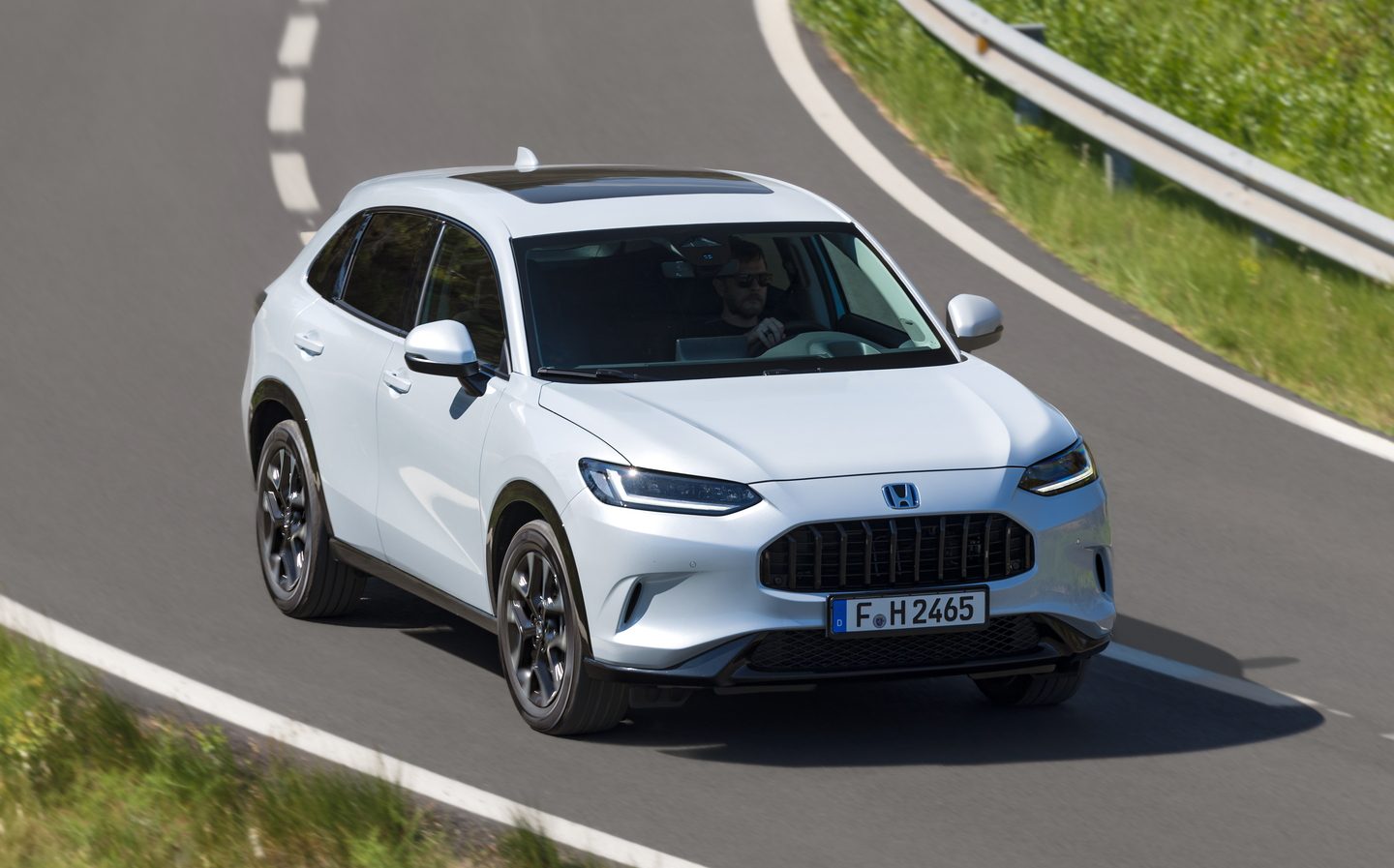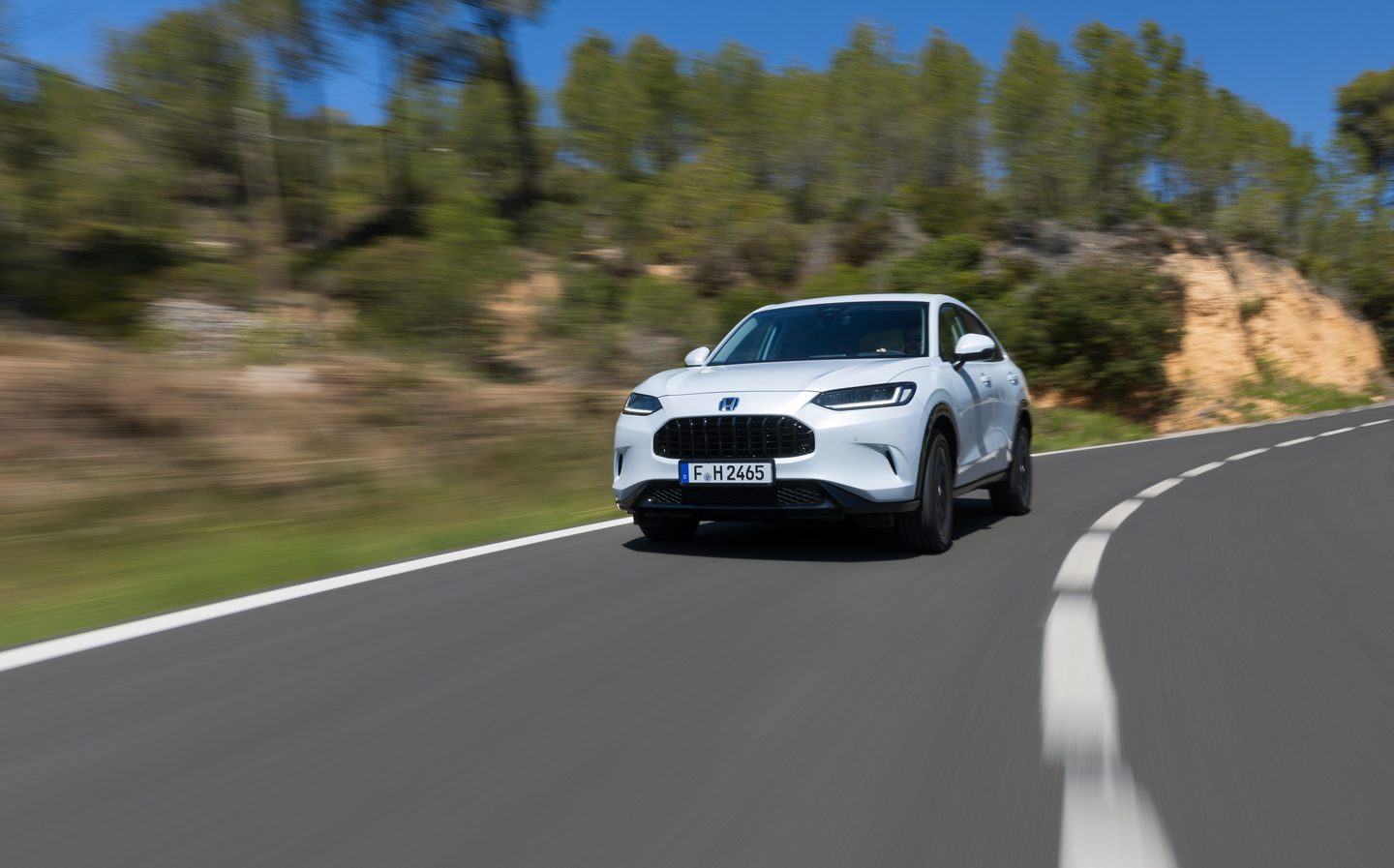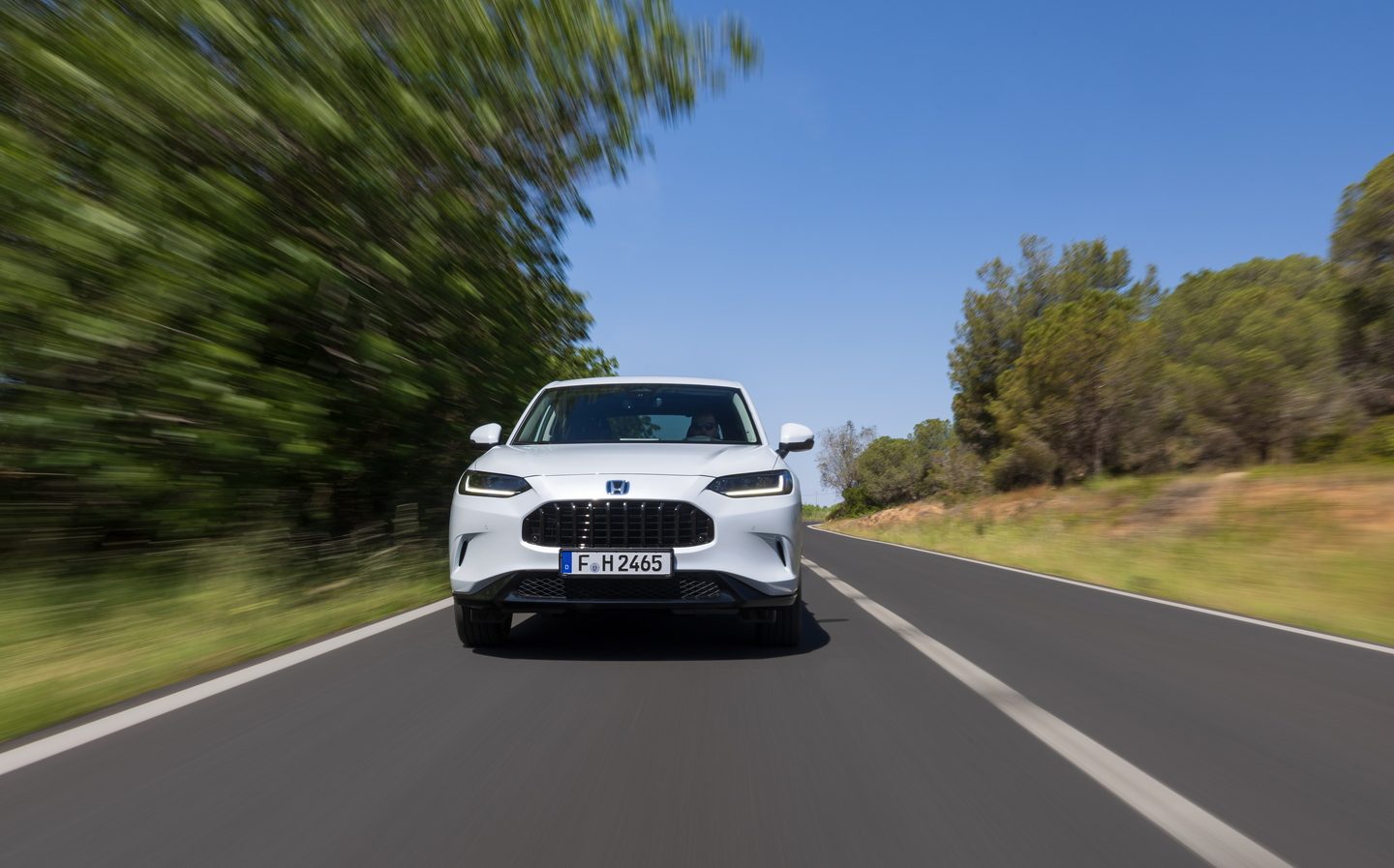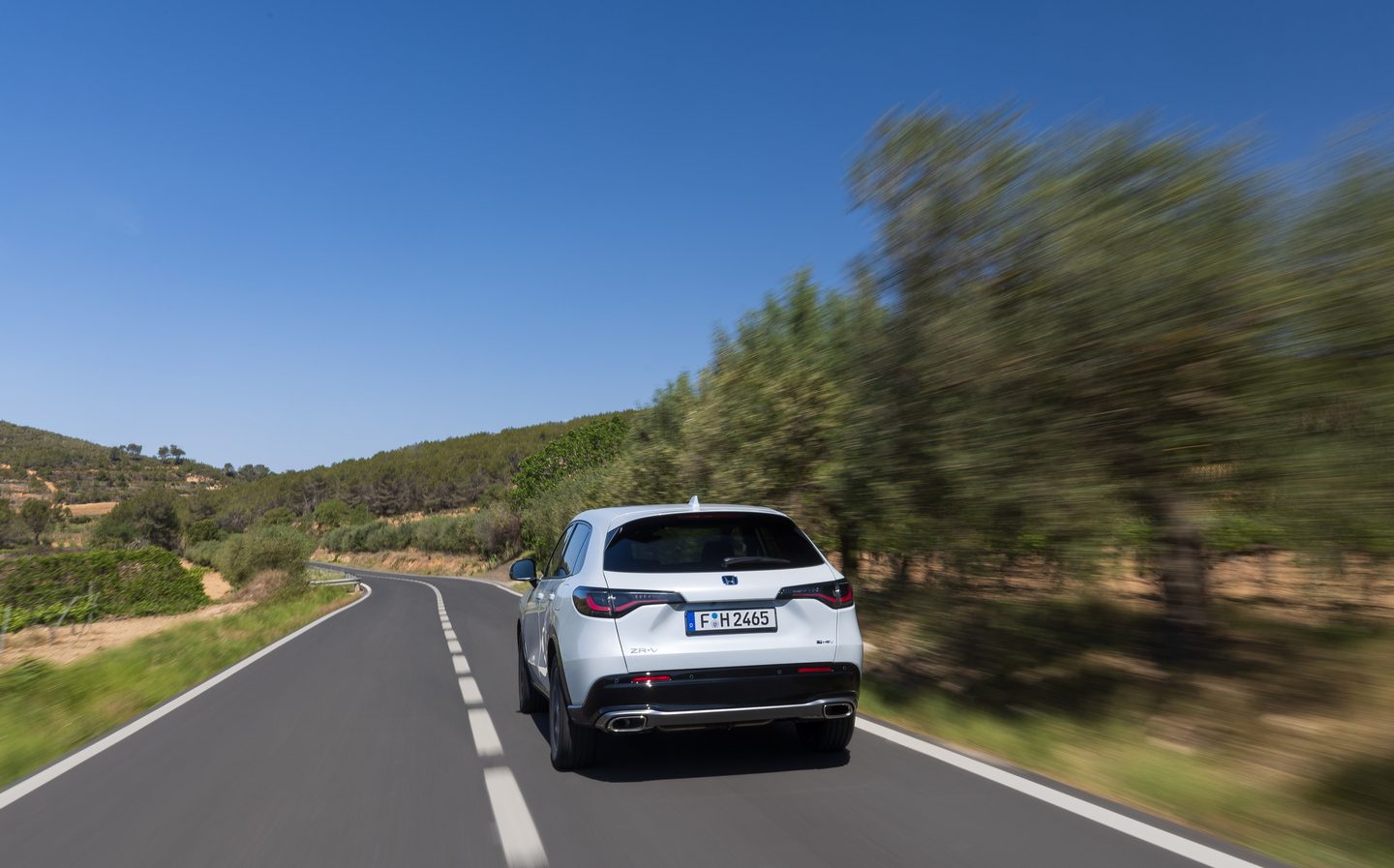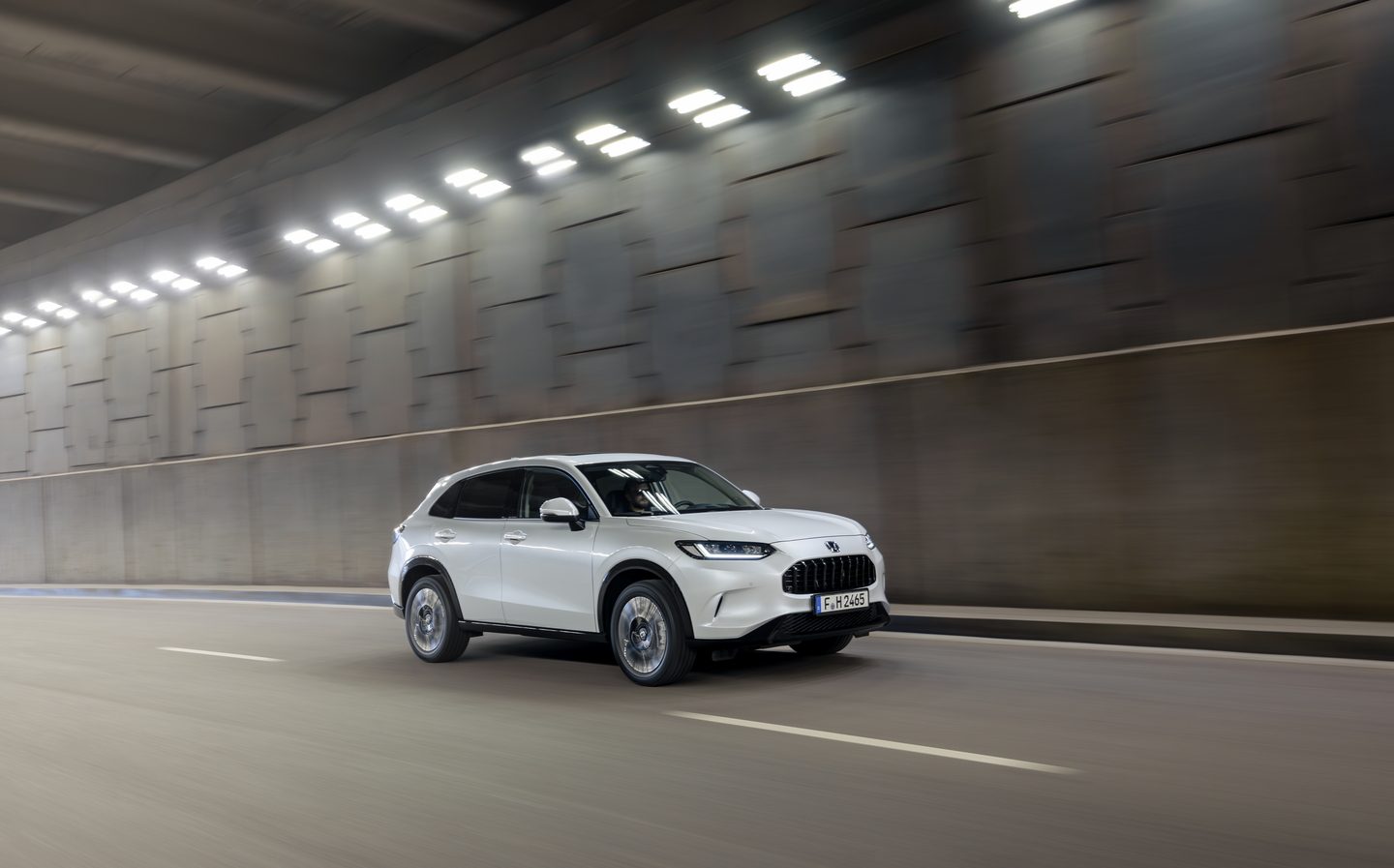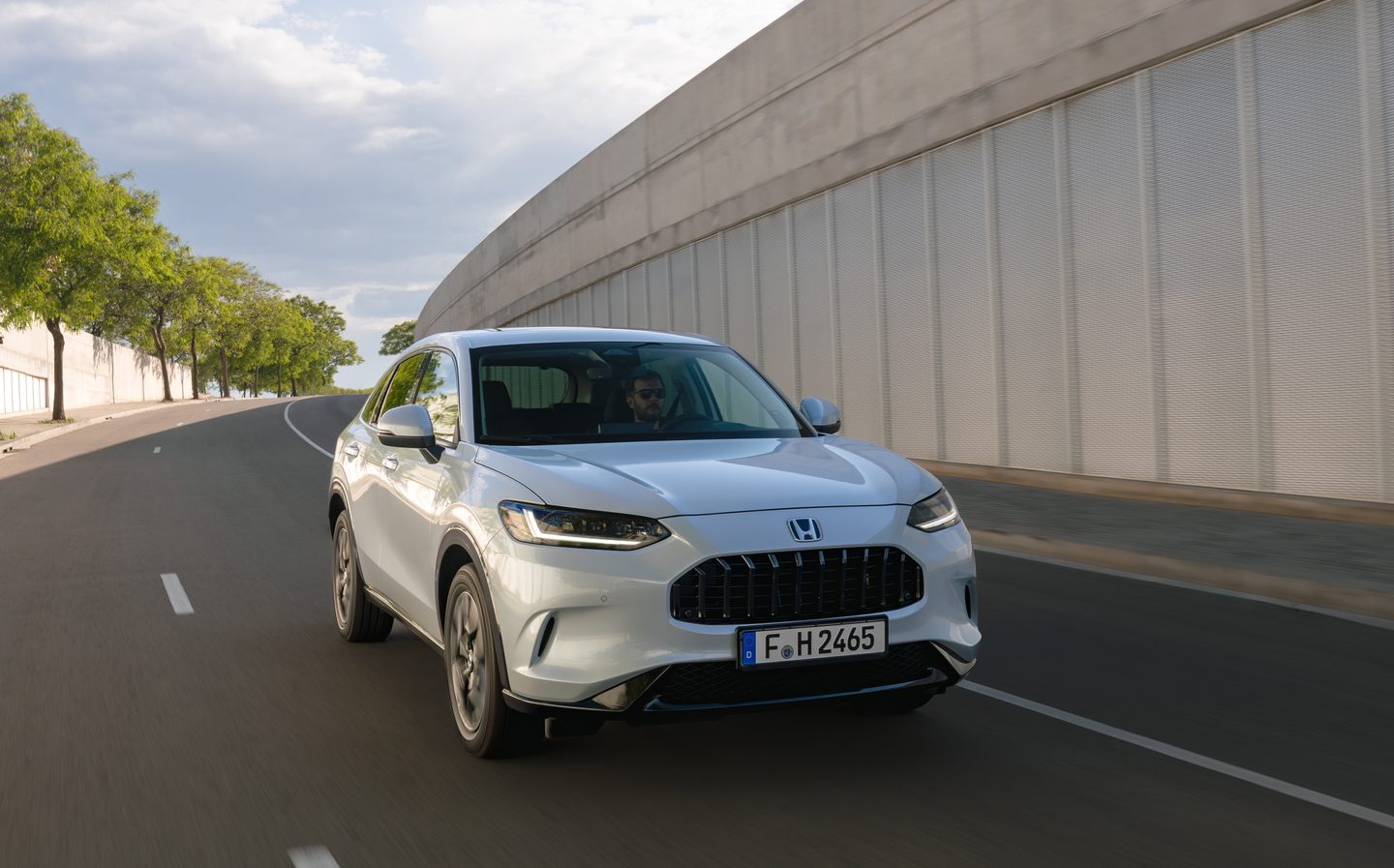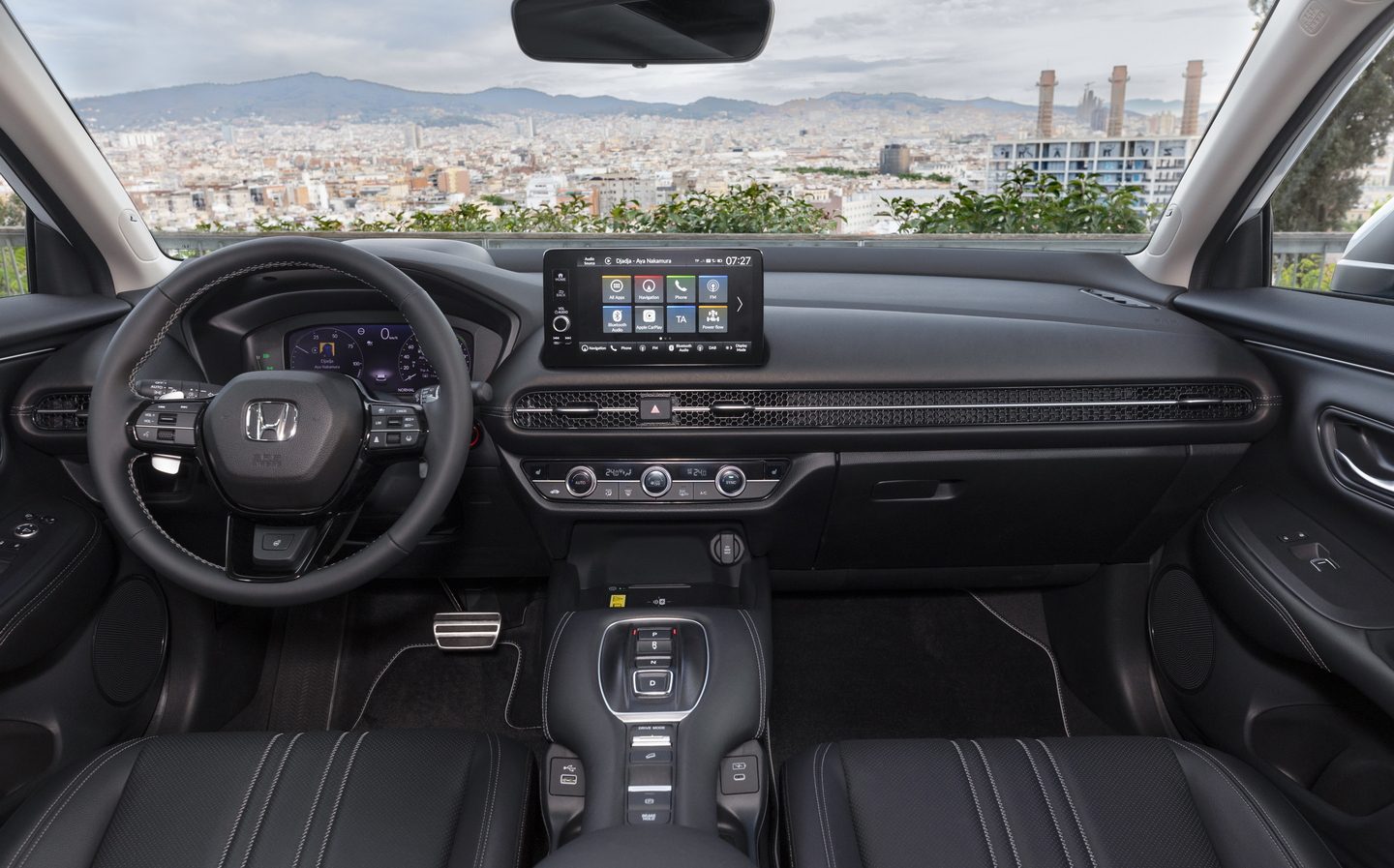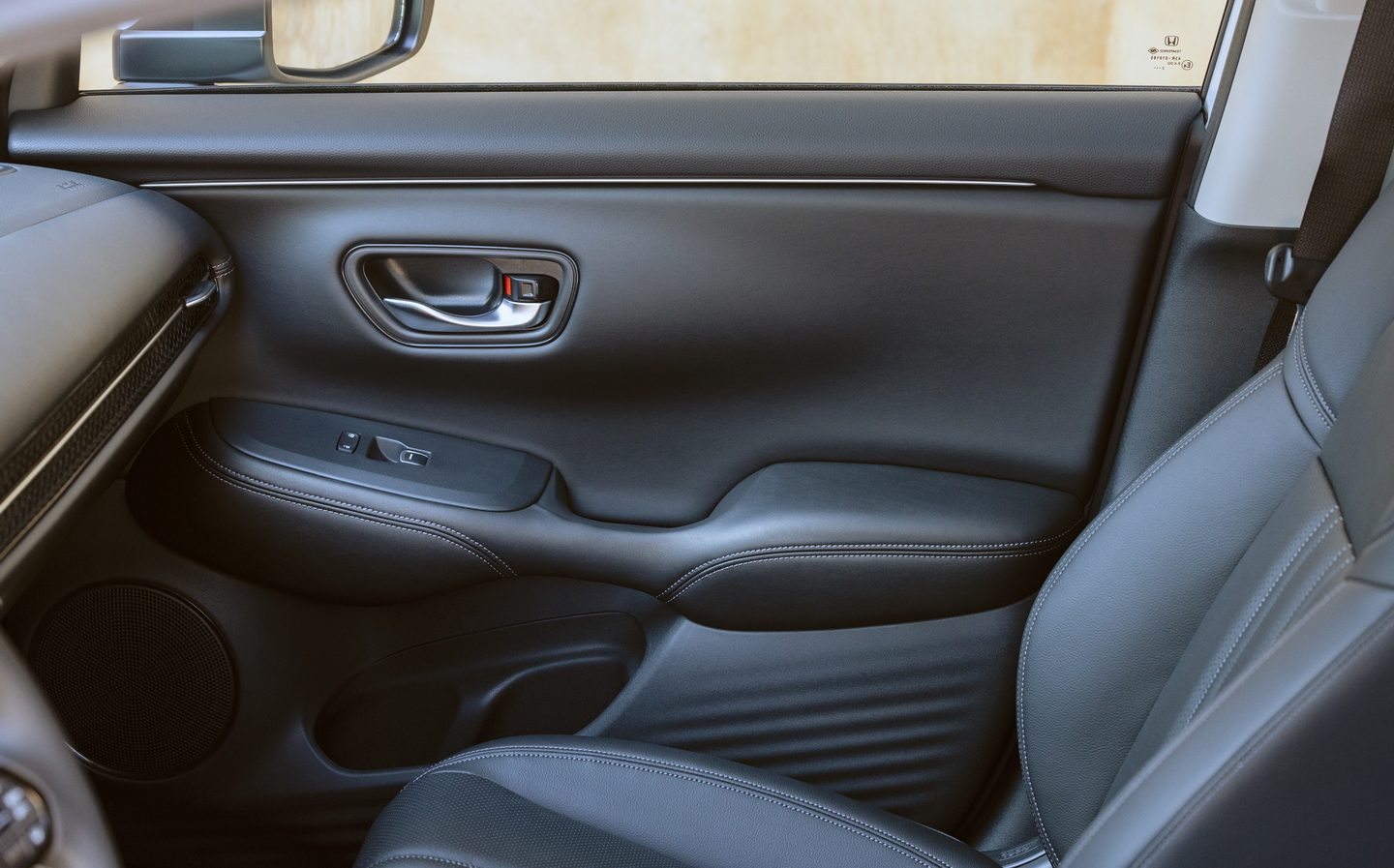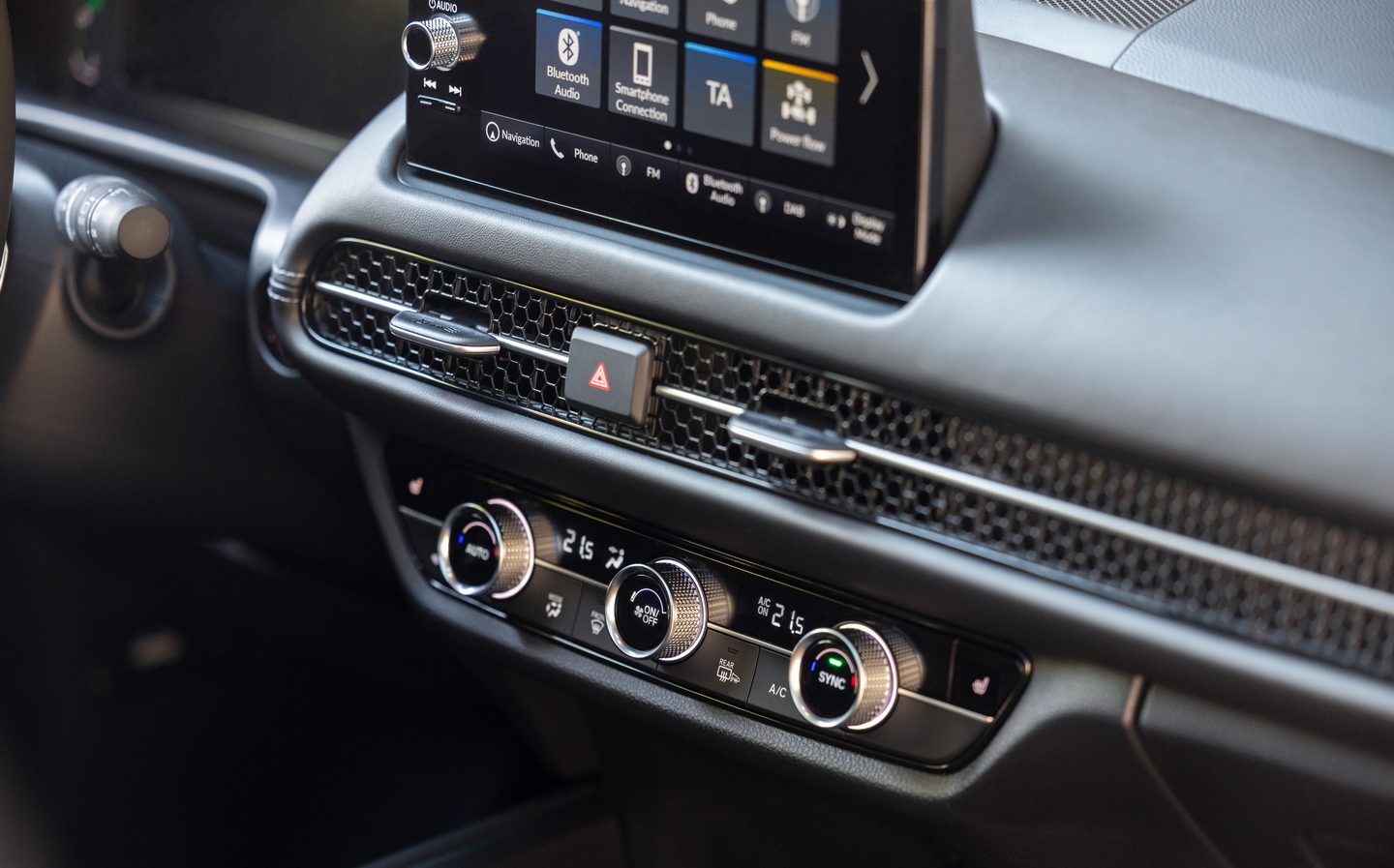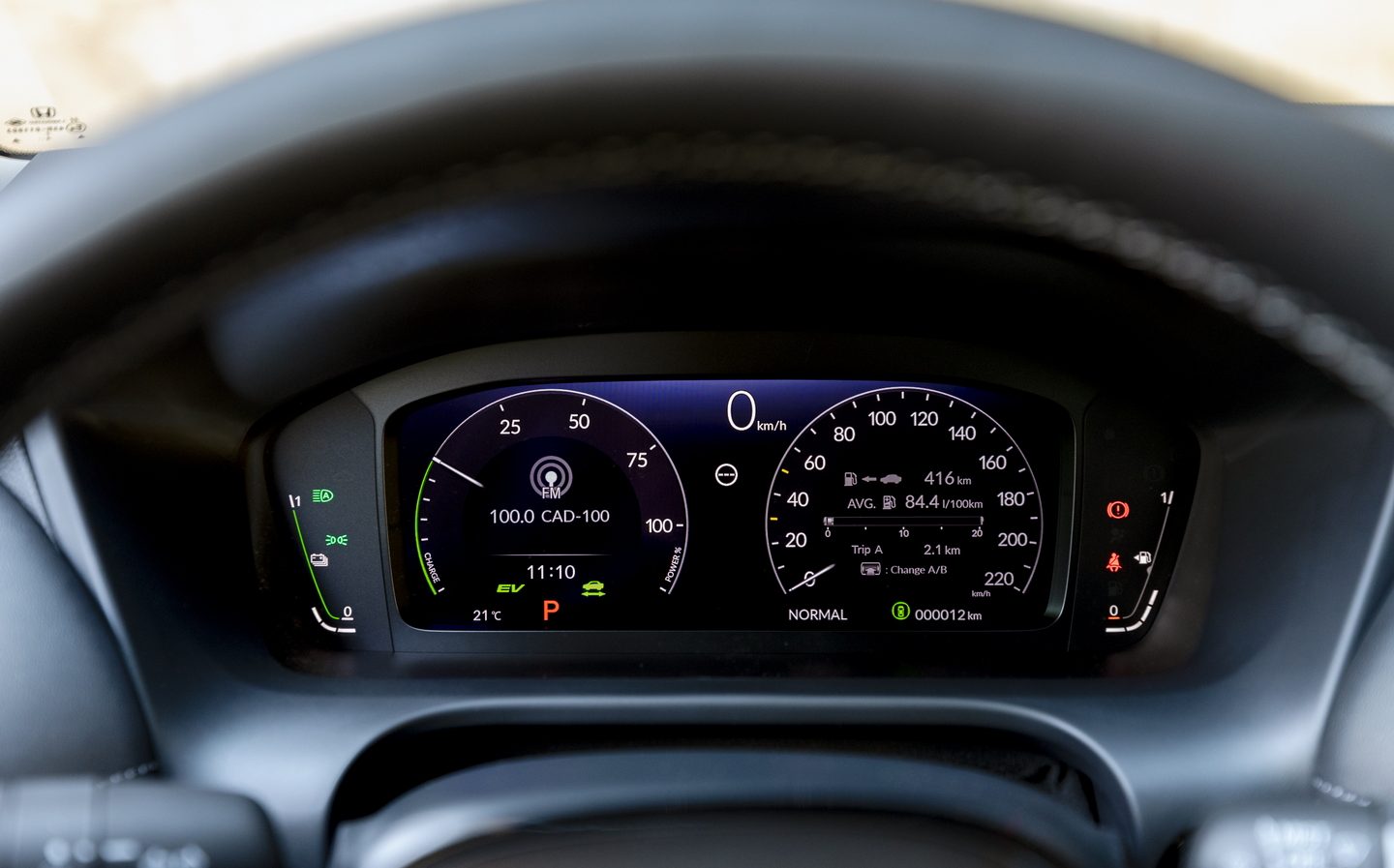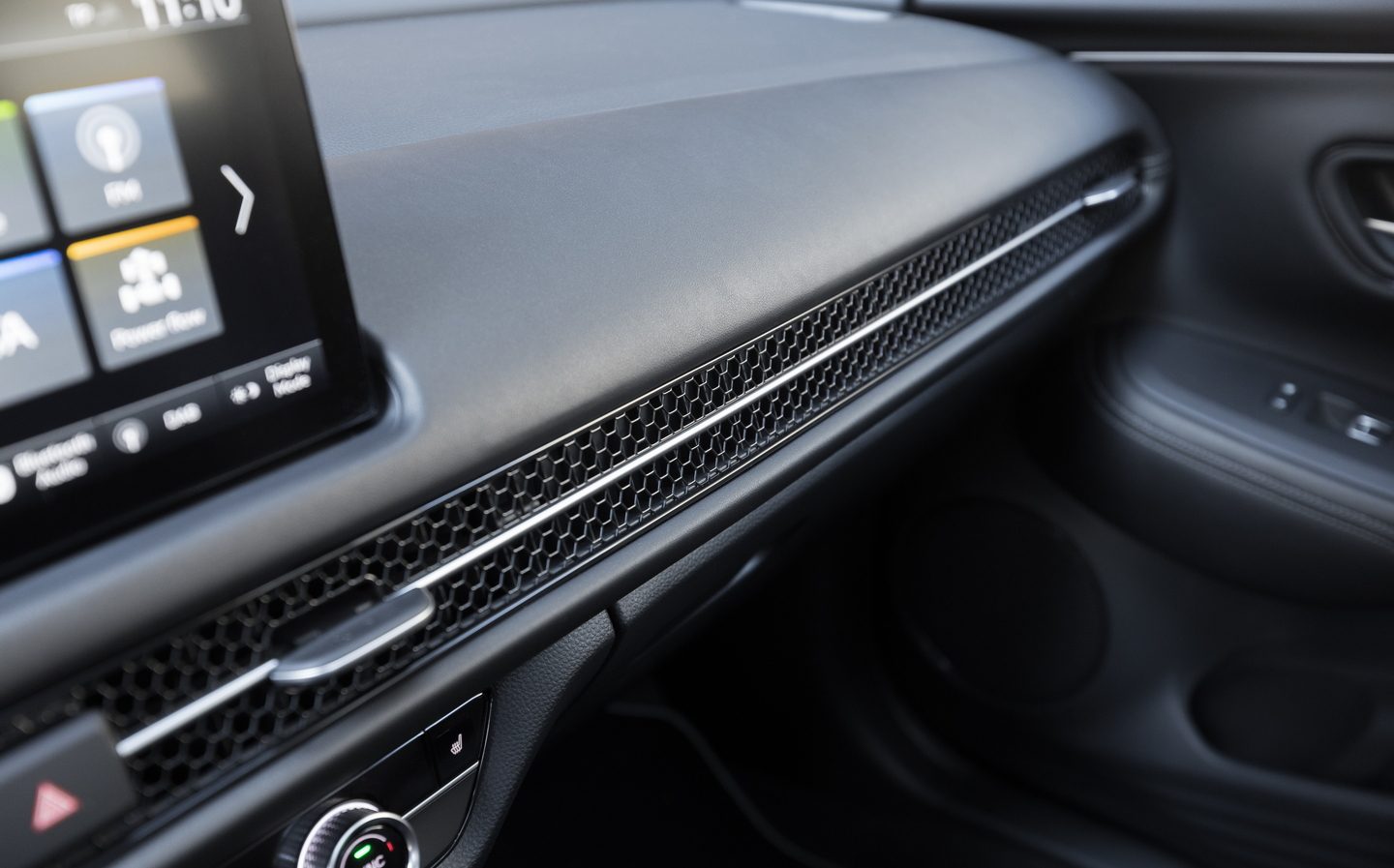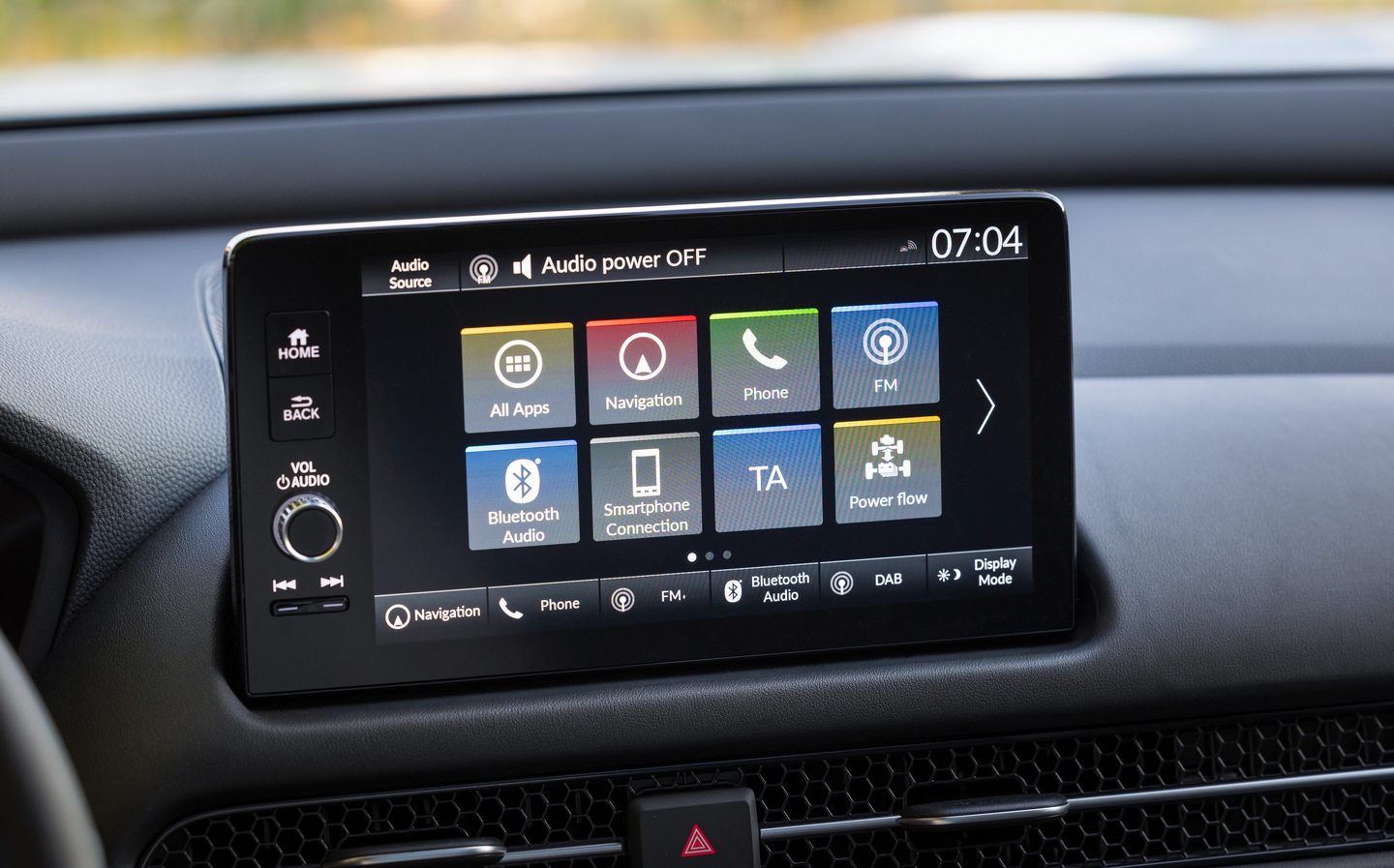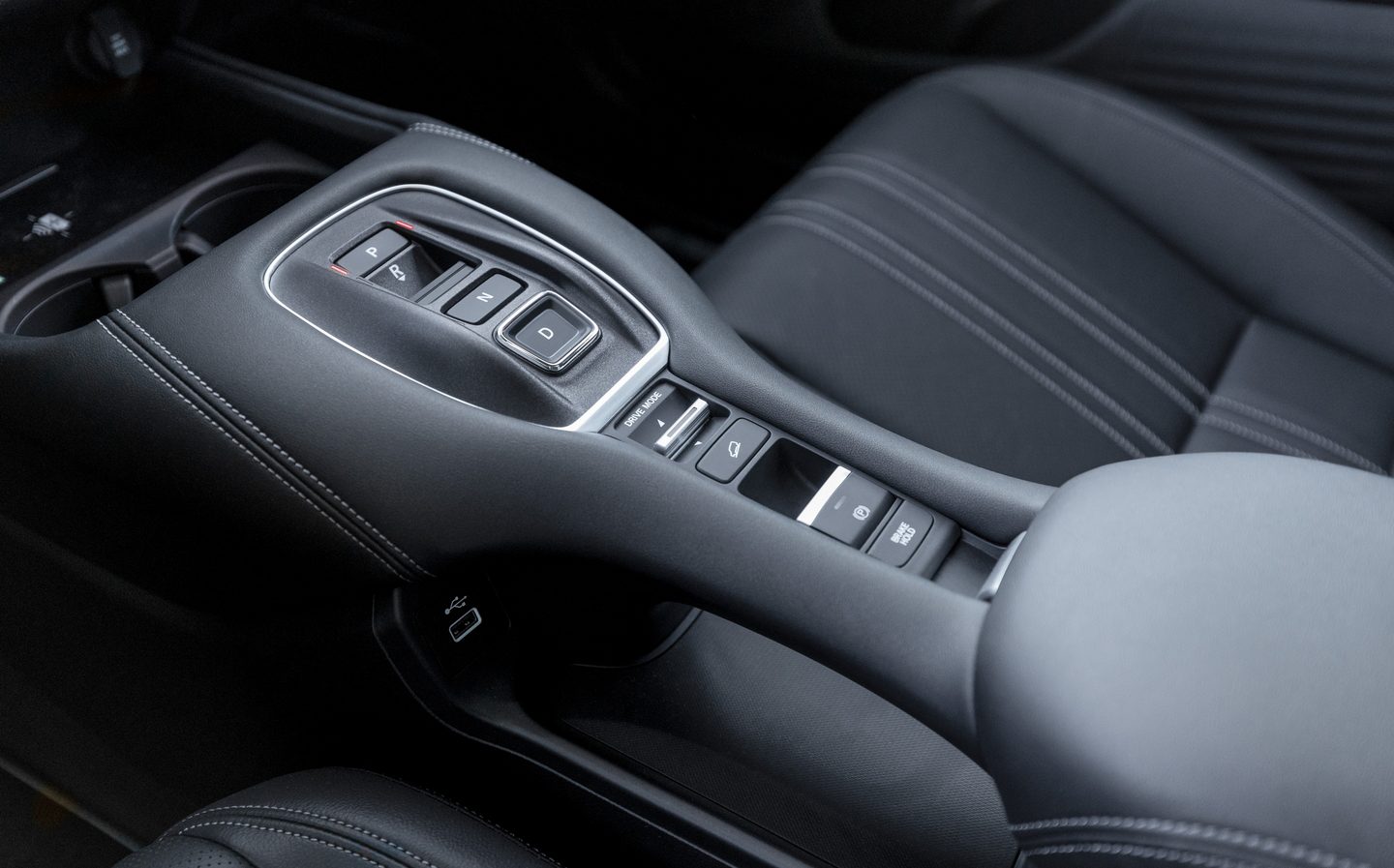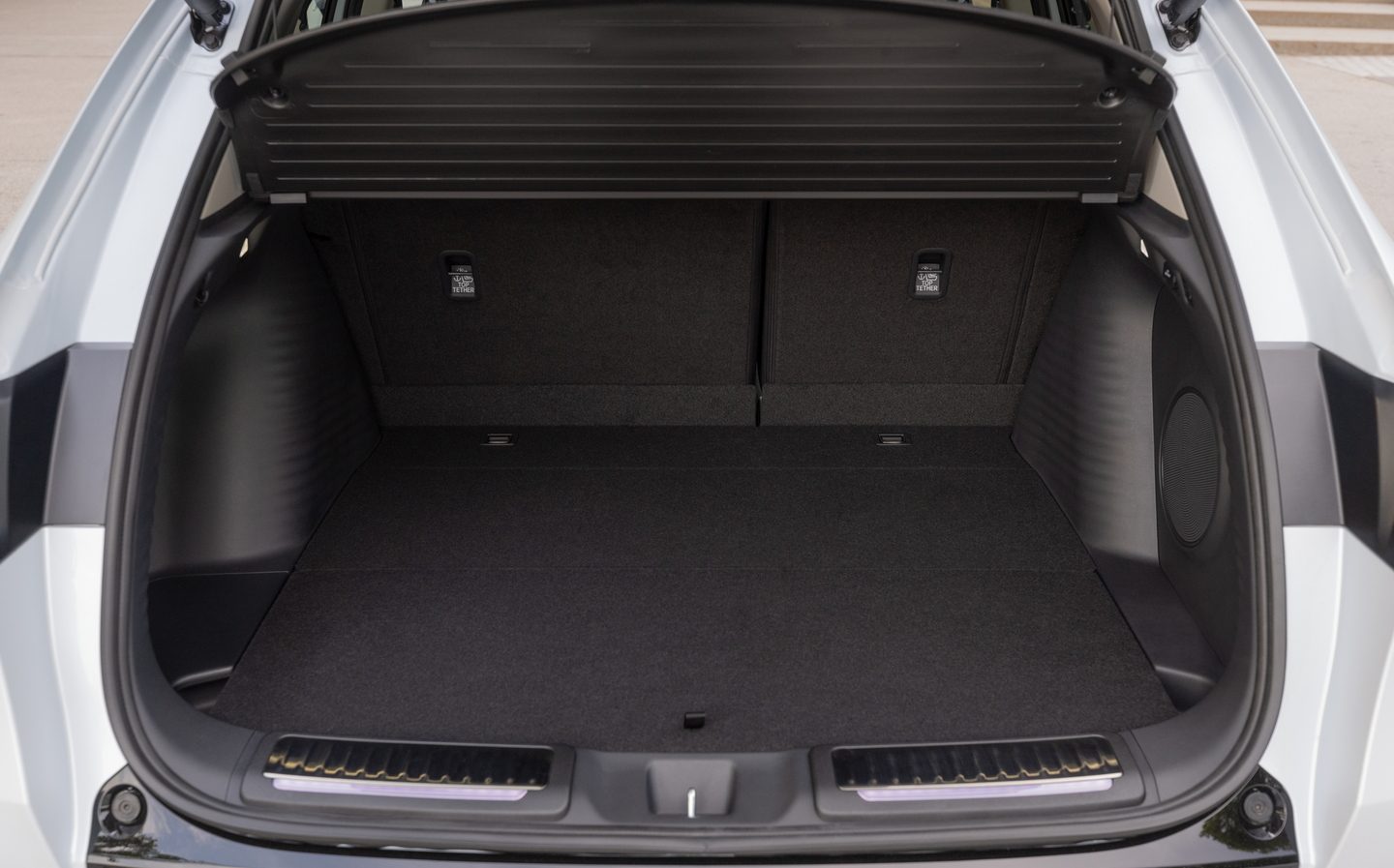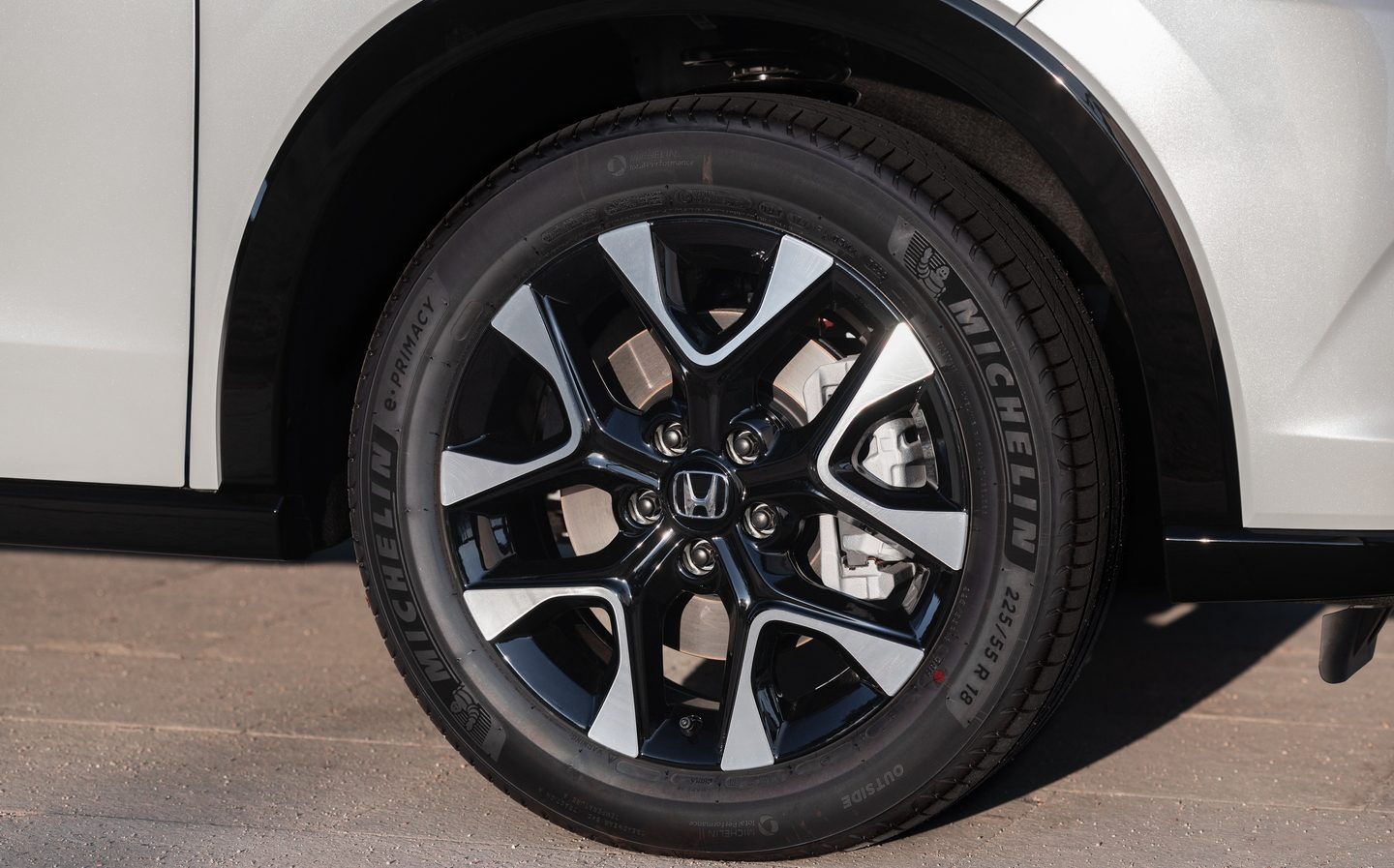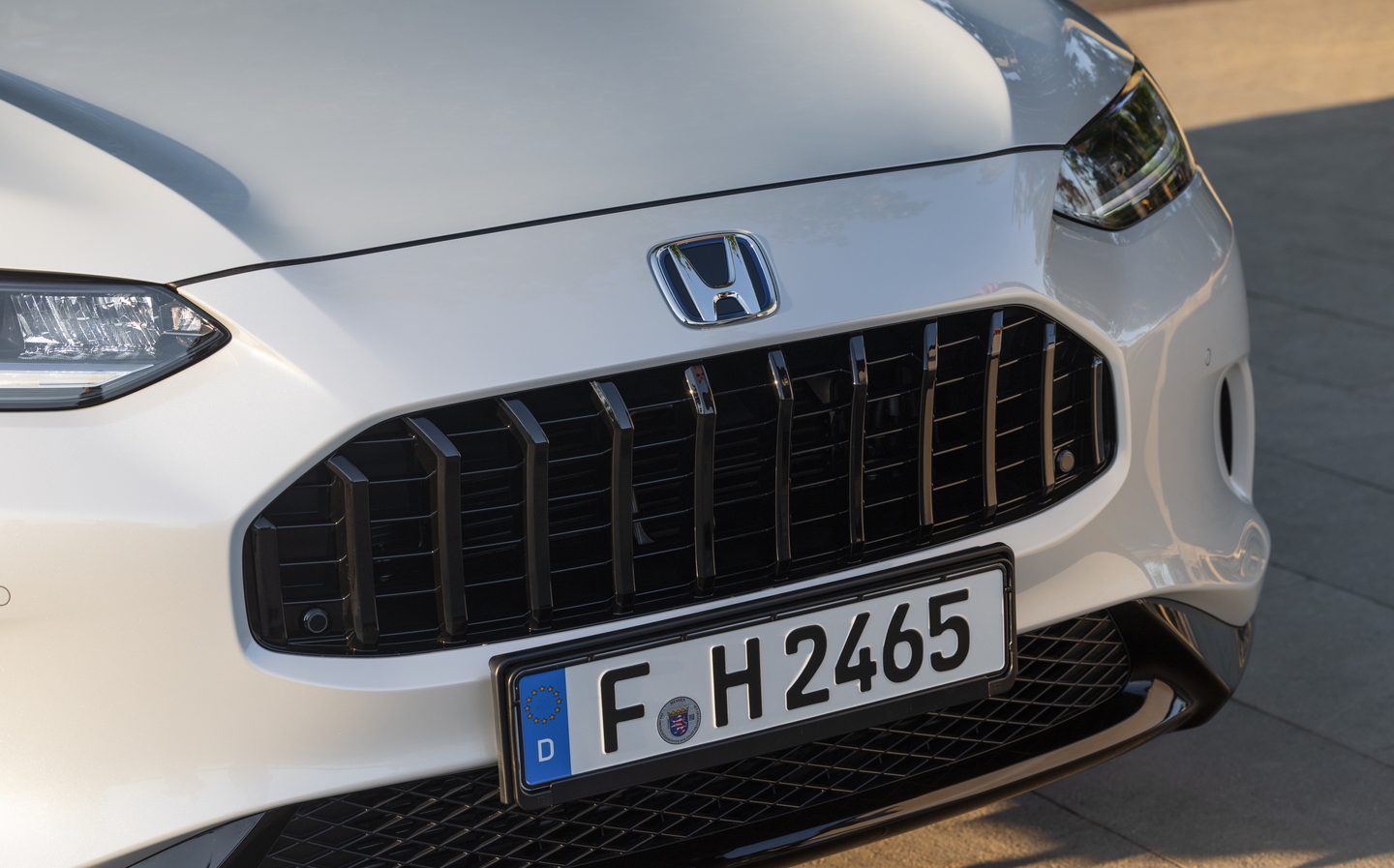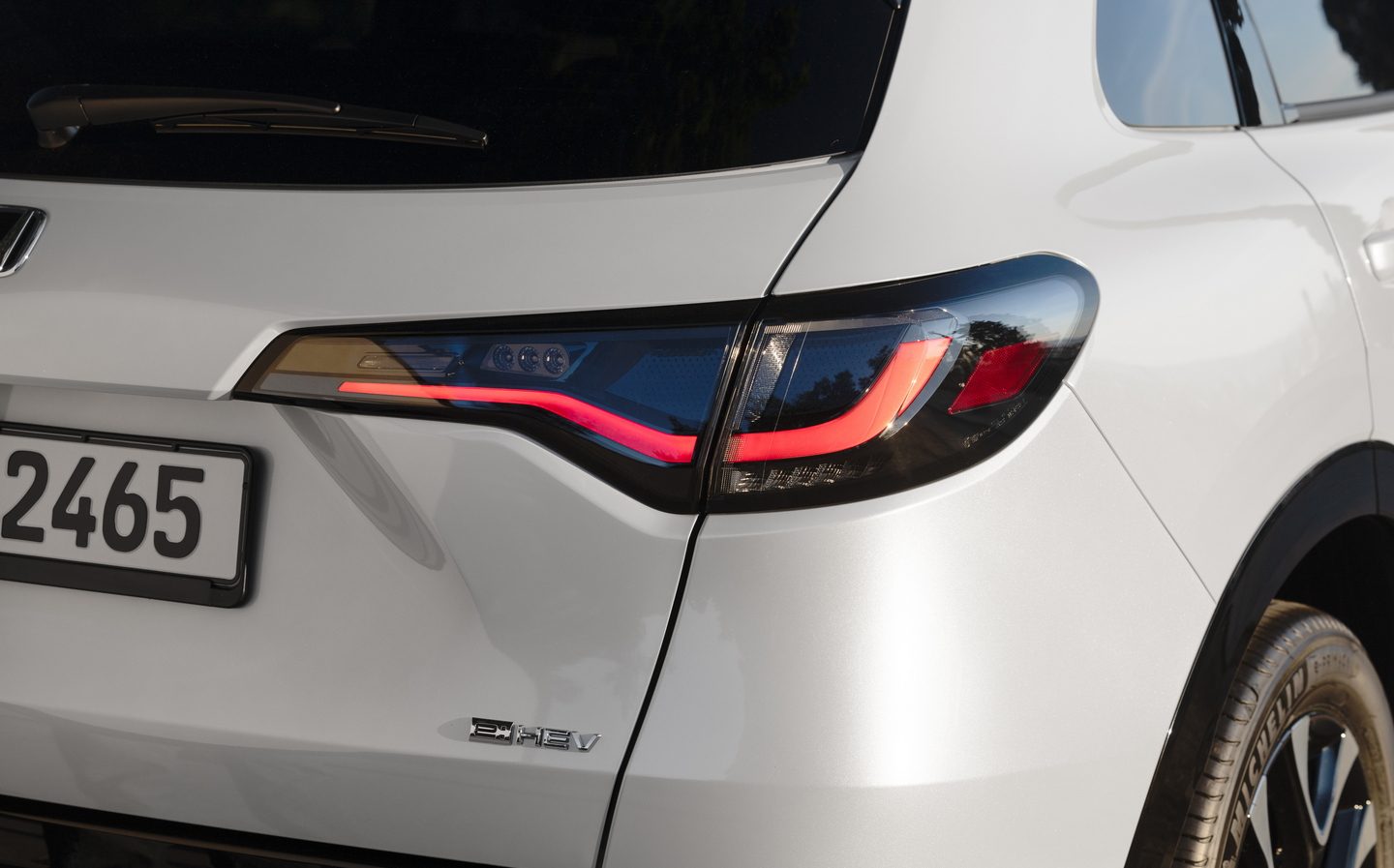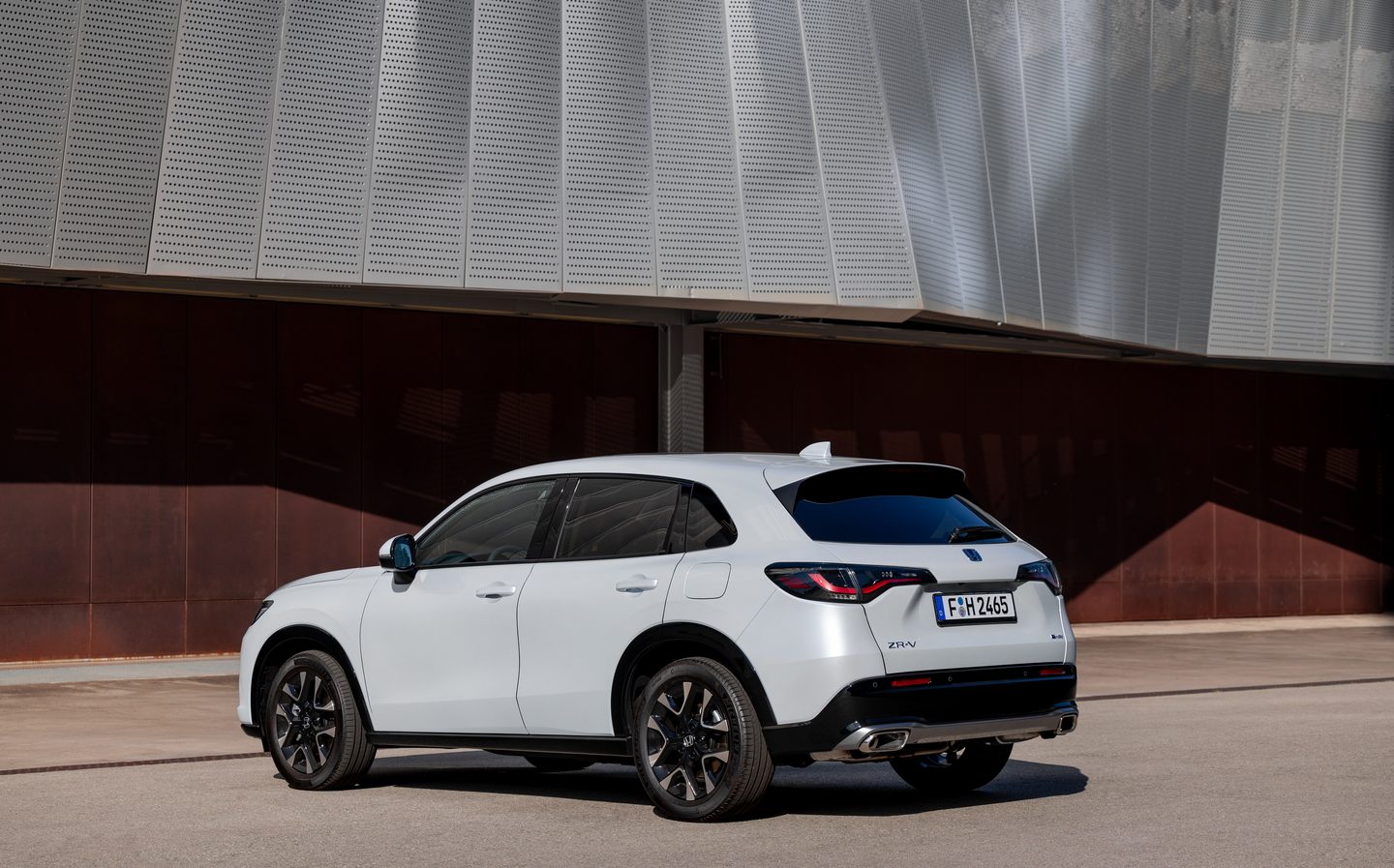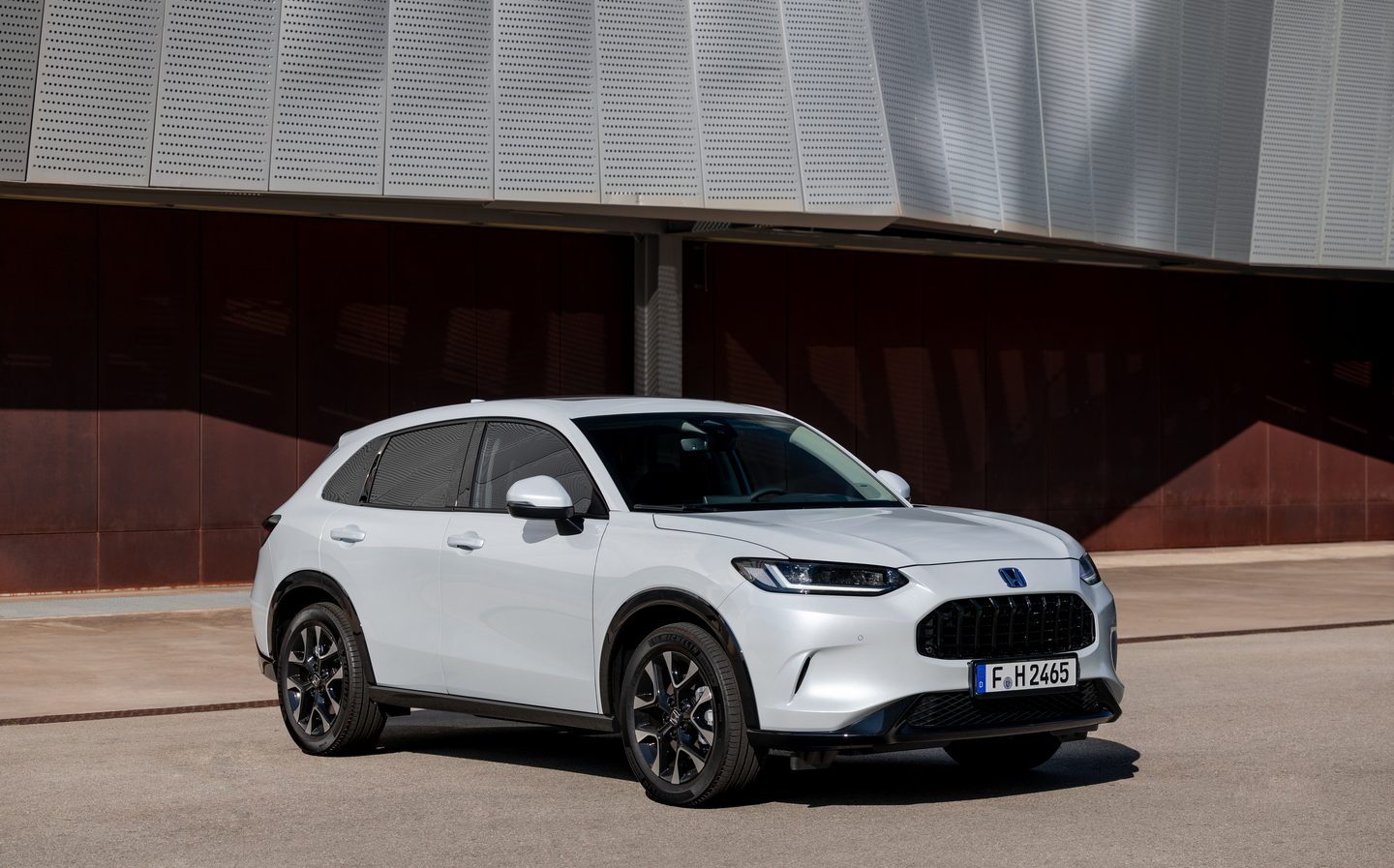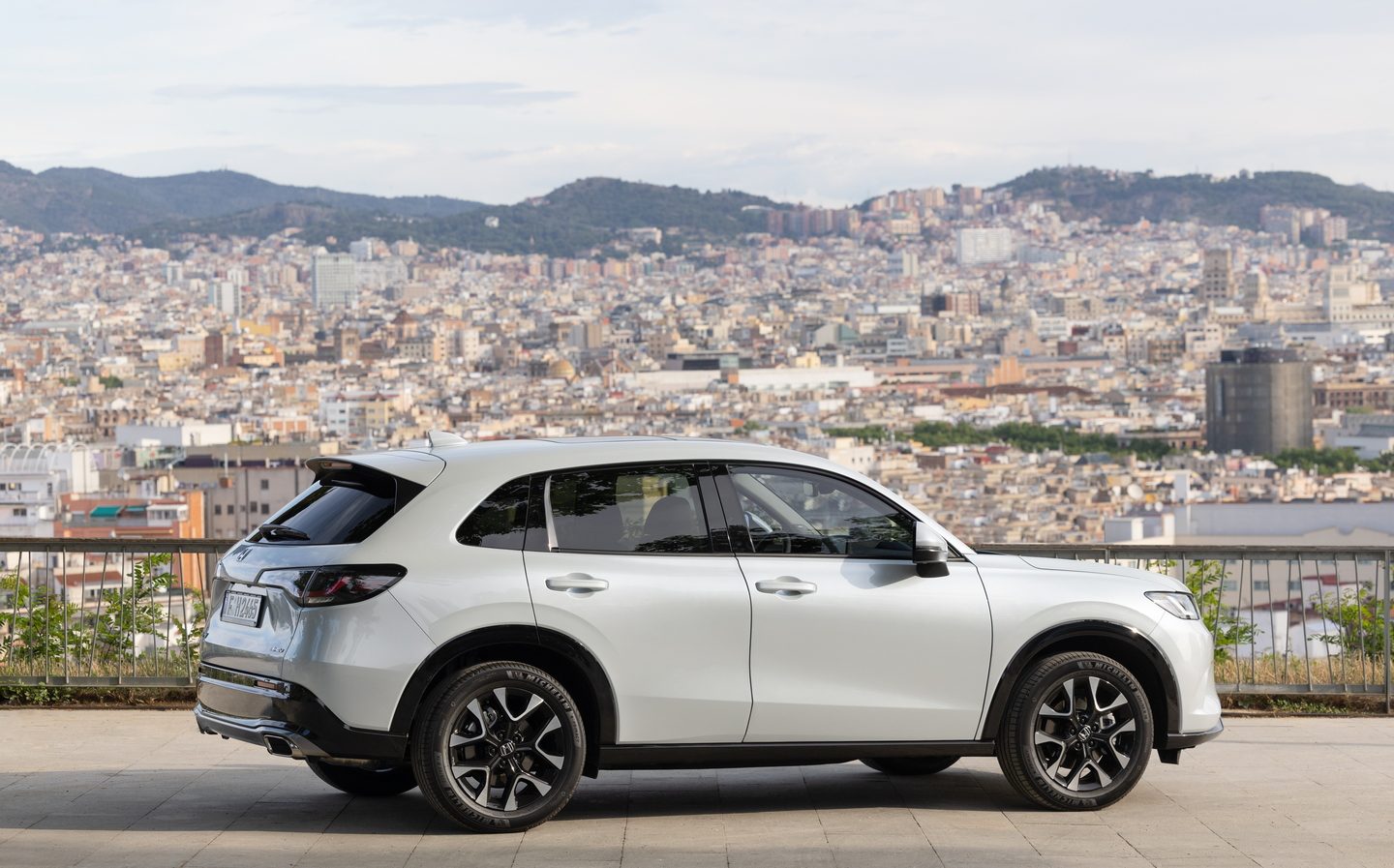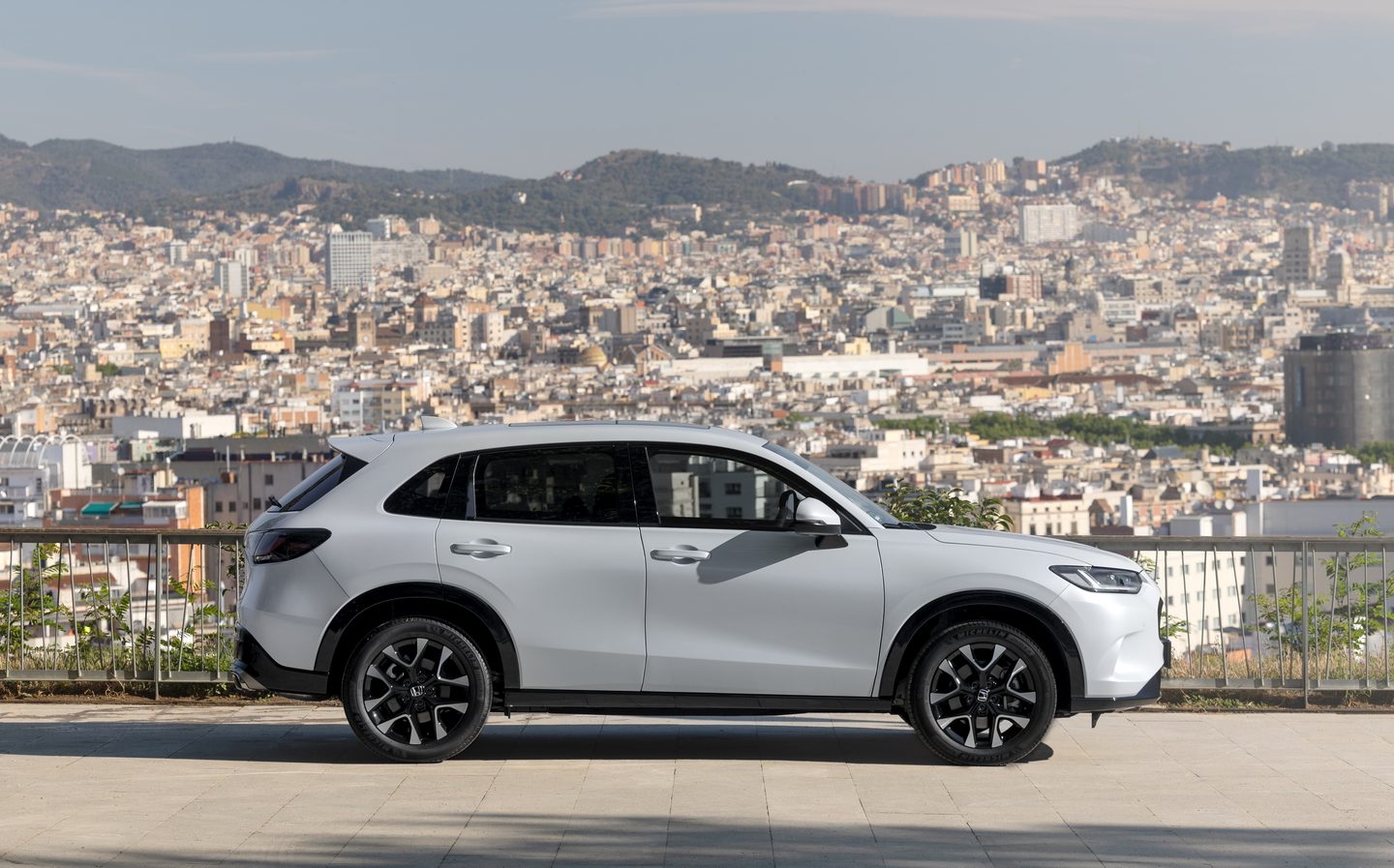Honda ZR-V review 2023: A new hybrid SUV to take on the best-sellers
Very much a Civic on stilts
Despite some rumblings of discontent from the anti-SUV brigade — including the ‘tyre extinguishers’, who sneak around letting the air out of their tyres — as well as tightening emissions legislation, the public thirst for tall, comparatively heavy SUVs seems to be insatiable. Just look at the Nissan Qashqai and Ford Puma, which regularly frequent the UK’s best-sellers list and show no signs of slowing down. That’s why it’s more or less unthinkable for a major manufacturer not to have a rival car in its range — something with which to grab a slice of the ever-growing pie.
Honda’s efforts include the CR-V and its smaller sibling, the HR-V, and now the Japanese manufacturer is slipping another entry between the two by importing a Qashqai rival from its American operation. Confusingly, it’s called the HR-V in the States but as that name is already taken in Europe, it is being dubbed the ZR-V over here. Even the Honda UK execs seem a little unsure as to why.
Whatever, it brings powertrain technology from the excellent new Civic hatchback but promises more cabin space and a higher driving position, as well as SUV looks of course. Yet Honda reckons it will still drive like a saloon car. Hmm, seems doubtful but we got hold of one to find out, and to see if the new SUV is capable of mixing it with popular rivals from Nissan, Toyota and Volkswagen.
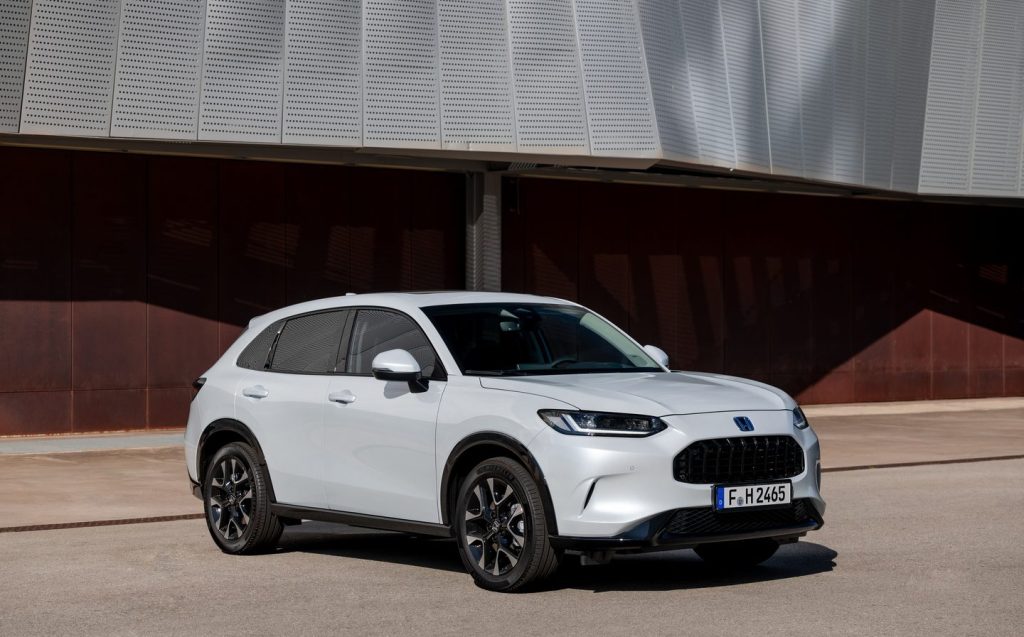
Exterior design and rivals
Honda could fairly be accused of conservatism when it comes to design, with any number of bland but inoffensive products rolling off the Japanese company’s production lines. But every now and then, the company comes up trumps with something radical, such as the Civic of the late 2000s, the fuel-sipping Insight hybrid and the CR-Z coupé.
The ZR-V, we fear, will not be remembered among the notable exceptions, with a slightly dull front end that apes that of the new CR-V. The downturned grille isn’t ugly, but it isn’t inspiring, either.
The same goes for the rear end, with its bland tailgate design and slightly oversized lights. Again, it isn’t offensive to the eyes — not by any stretch of the imagination — but nor is it striking or pretty. Even with the optional Rugged pack, which adds splash guards and side steps for a slightly more off-road-orientated image, the ZR-V never looks particularly interesting.
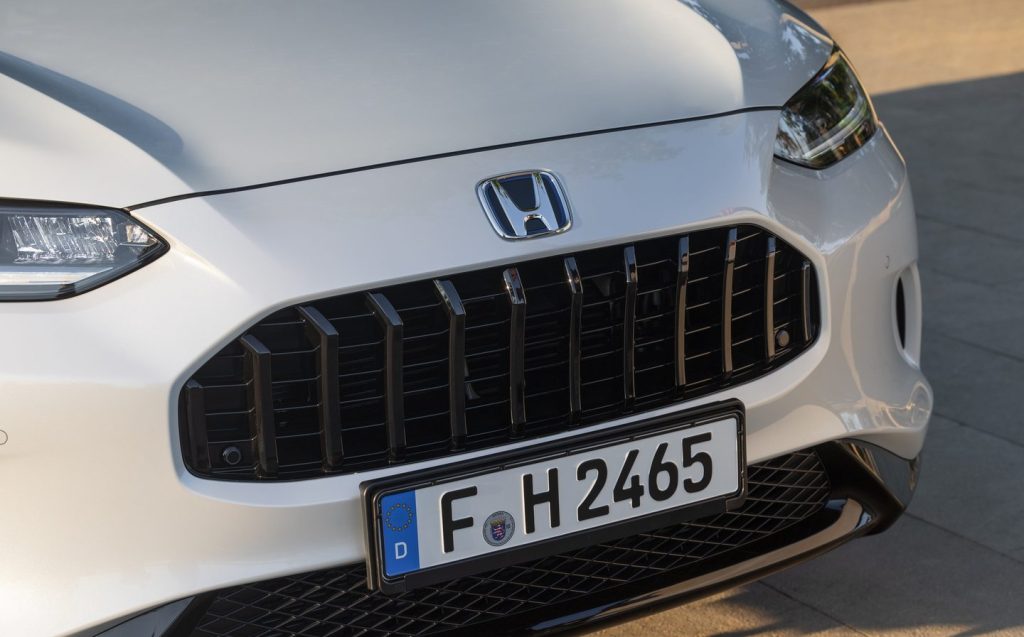
All that will likely be an issue for a car that’s faces rivals such as the Nissan Qashqai e-Power, Toyota C-HR and Renault Captur E-Tech hybrids, as well as the highly popular Hyundai Tucson, Kia Sportage and Volkswagen T-Roc. Whether you find them attractive or not, these cars are playing in the same league as the ZR-V and offer much more visual interest than the Honda.
Interior and practicality
Honda’s cabin quality has improved dramatically in recent years, with the latest versions of the Jazz, Civic and HR-V all offering more tactile and better built cabins than earlier models. And the ZR-V follows suit, borrowing heavily from the Civic in its dashboard design.
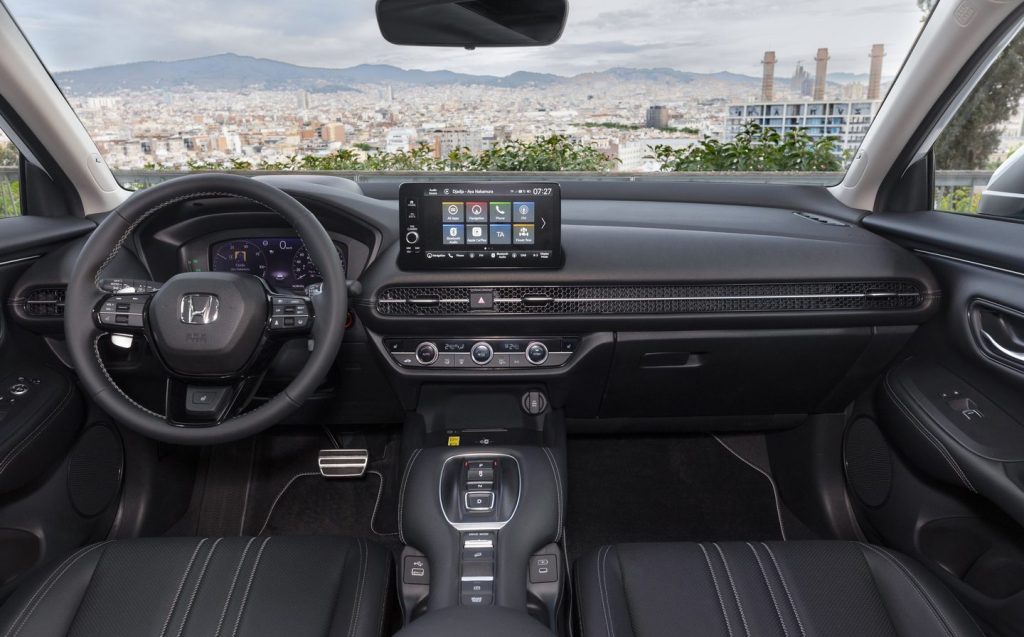
That means there’s quite a minimalist style, with just a central touchscreen, climate control panel and wide vent that spans the dash and integrates the air vents.
Build quality is exemplary, with every panel fitting neatly alongside its neighbour and everything feeling solidly constructed. In places, some of the materials feel a little cheap but that’s fairly normal in a mainstream family car. After all, premium materials come with a premium price tag. In general, though, the ZR-V doesn’t feel at all low rent or plasticky.
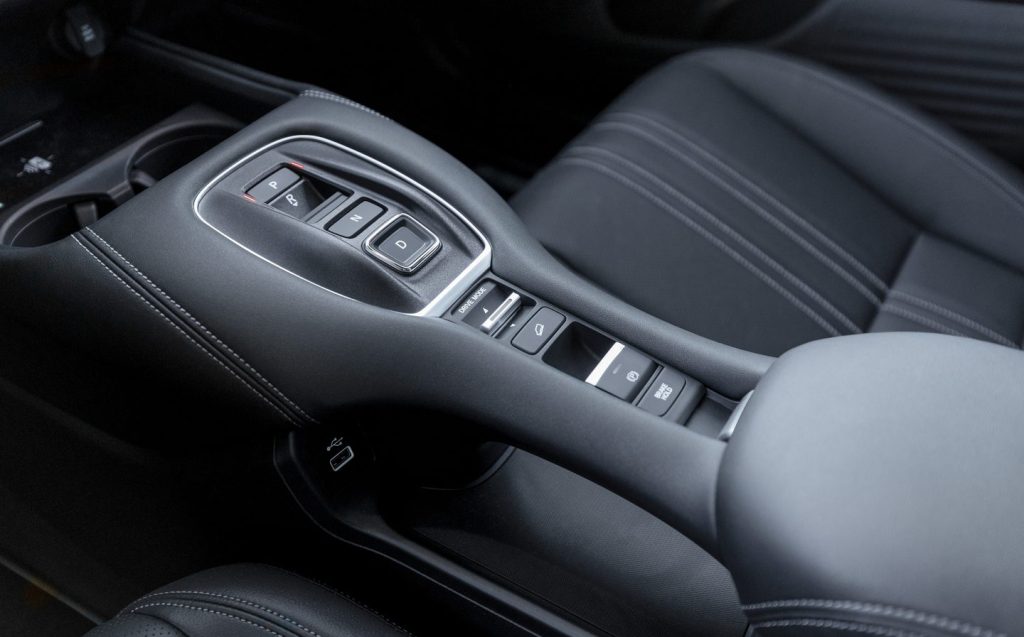
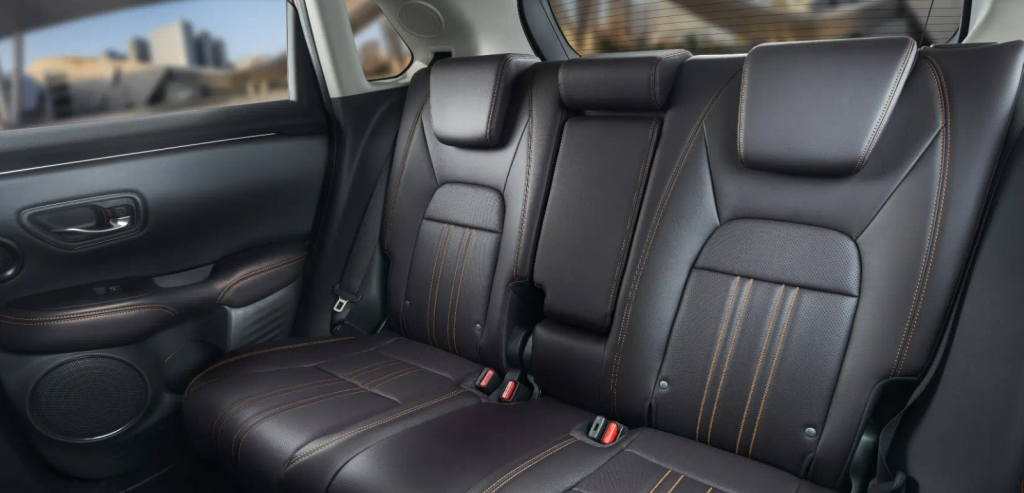
It’s spacious, too. The ZR-V has ample room in the front and a good amount of seat adjustment. The panoramic roof fitted to upmarket Advance models brightens the cabin, as well.
Further back, however, the roof impinges on rear headroom noticeably, so those who regularly have rear-seat passengers might prefer the more commodious Sport model. But if you’re carrying kids back there, the rear legroom is more than adequate.
Boot space, on the other hand, is less generous. The basic Elegance version and the mid-range Sport model both get 380 litres of luggage capacity, putting the ZR-V roughly on a par with the Volkswagen Golf. However, the top-end Advance cuts that capacity by 10 litres.
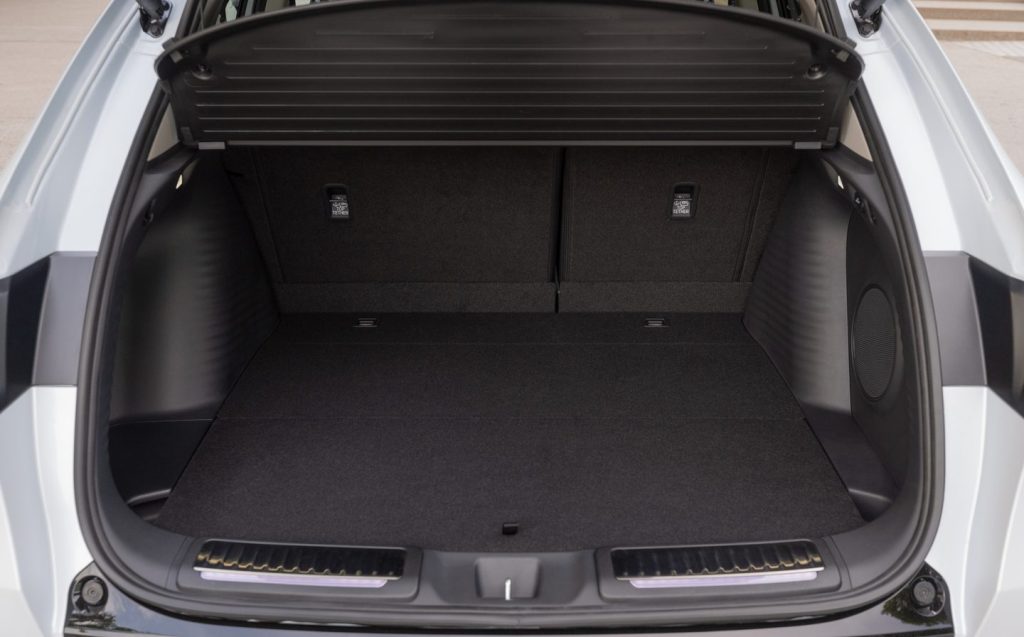
Either way, relative to SUVs such as the Nissan Qashqai and Volkswagen T-Roc, the Honda is a long way behind in the boot space stakes, and even an expansion to around 1,300 litres when the rear seats are folded can’t make up for the shortfall.
Technology and safety
Technology has been a weak point for Honda in recent years, with the previous-generation Civic held back by a poor infotainment system that also blights the outgoing CR-V. The car maker has clawed back a bit of ground with its latest offerings but it’s still some way behind the best infotainment systems in the business.
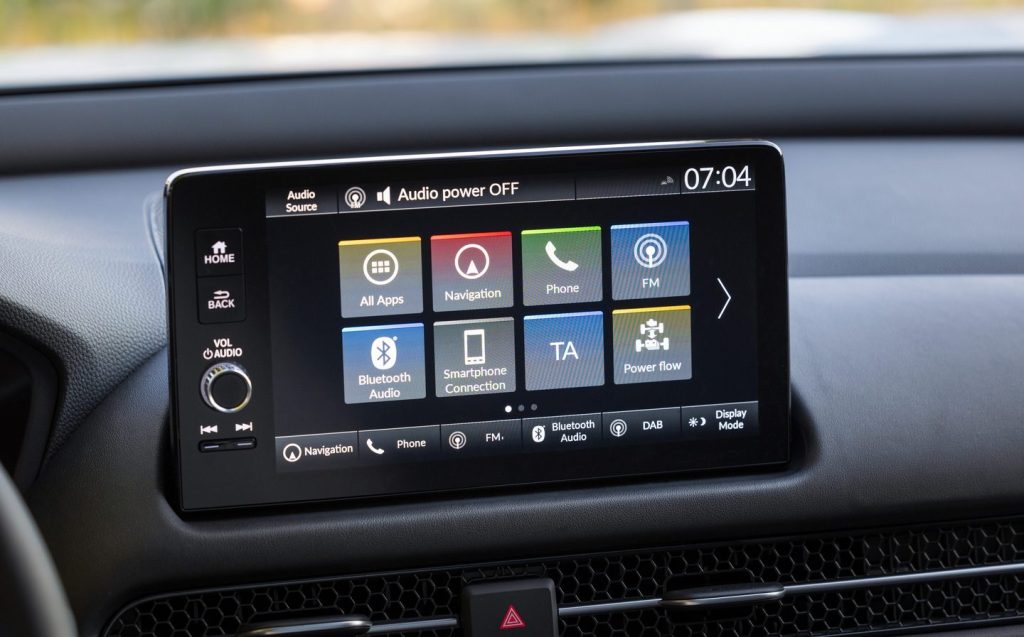
The ZR-V gets much the same touchscreen as the one in the latest-generation Civic, and it’s certainly much more modern than, say, the one fitted to the outgoing CR-V, but it’s still behind the curve compared with equivalents from Kia and Ford.
On the plus side, it’s responsive enough to make the standard Apple CarPlay and Android Auto smartphone tech work neatly, and we expect most owners to circumvent the clunky proprietary system by simply pairing their phones.
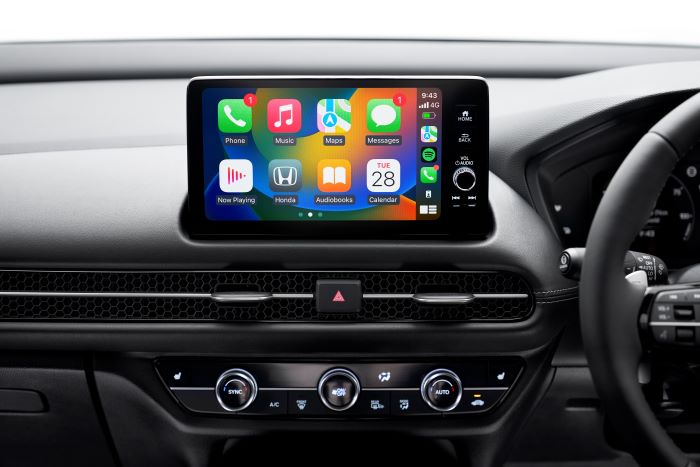
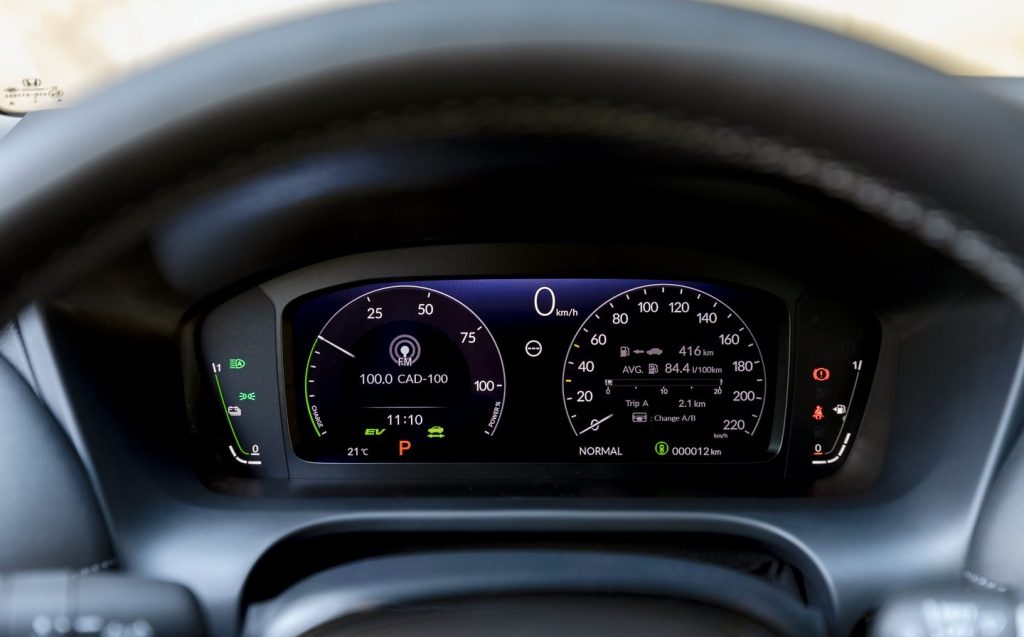
On the other hand, the ZR-V comes with the same digital instrument cluster as the Civic, and that’s much better news. While it may not be as flash or as clever as the systems fitted to Volkswagens and Hyundais these days, the display is fairly easy to configure and it’s certainly easy to read, which at least makes it competitive.
And it has the details right. Where some screens work really well with the on-board navigation system, providing turn-by-turn instructions and the like, few can provide the same service when your phone is handling the navigation via CarPlay or Android Auto. The Honda is a welcome exception.
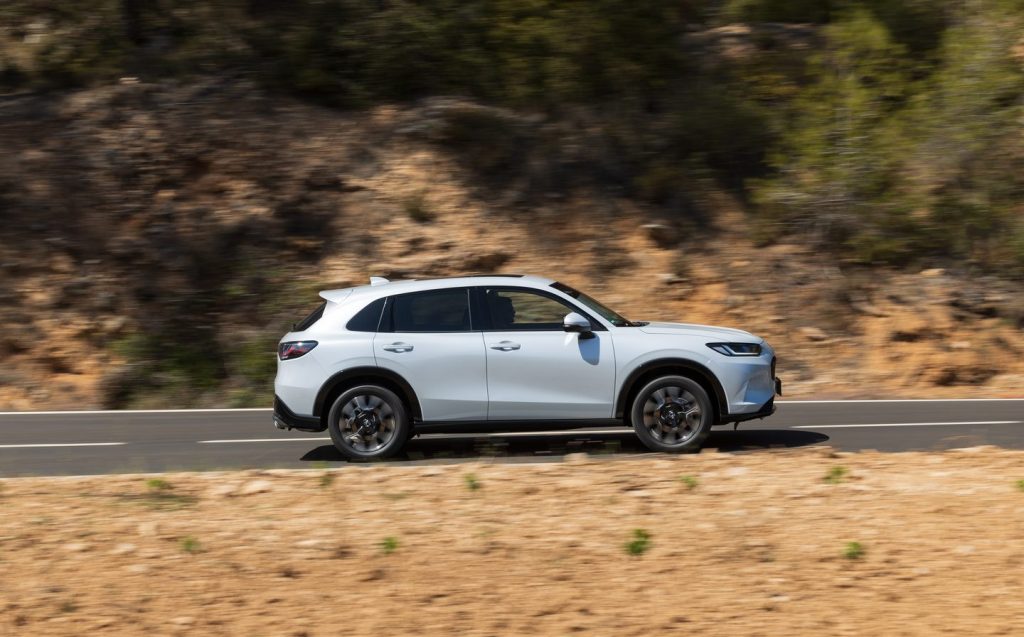
Performance, power output and acceleration
The ZR-V is equipped with much the same hybrid system as the latest-generation Honda Civic, and though the engine-and-motor combination works in quite a complex way, that’s actually good news. In the Civic, the 2-litre petrol engine works quietly and efficiently with the electric motor, providing ample performance and refinement, as well as respectable economy. In the ZR-V, things are no different.
Basically, the system works by using the electric motor to power the wheels almost all the time — particularly at low speeds — while the engine simply keeps the battery pack topped up. Only at motorway cruising speeds, where the motor is at its least efficient, does the petrol engine drive the wheels.
It’s a tricky balancing act but the transition is seamless, and without the benefit of a display that shows you how the power is being distributed, you’d never be able to tell one from the other.
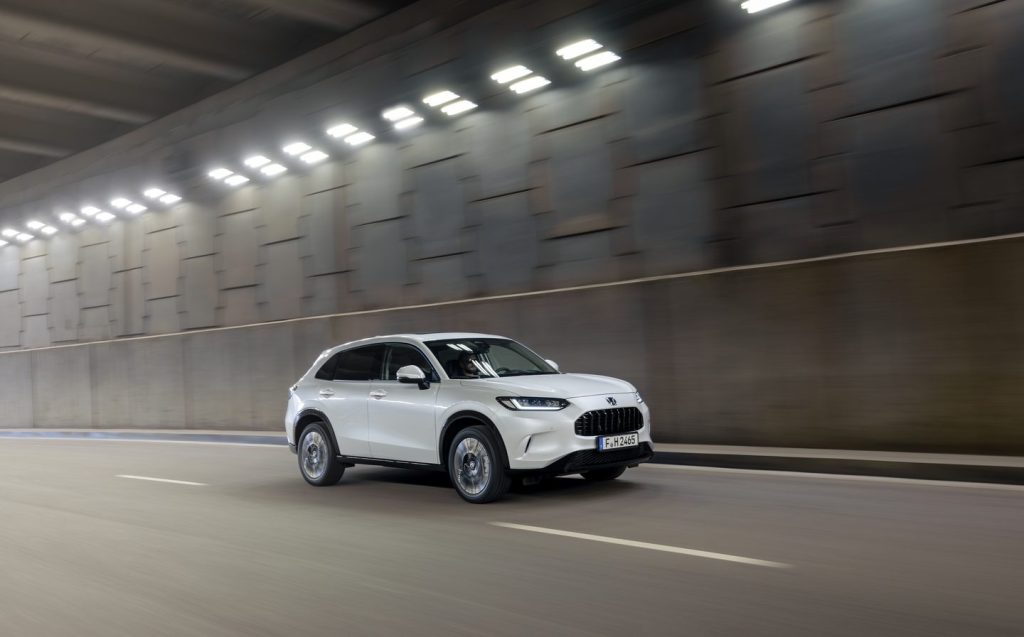
Performance is respectable, too, thanks in part to the torque of the electric motor, while the 182bhp output is enough for 0-62mph in around eight seconds.
But efficiency, rather than perfromance, is the name of the game with the ZR-V. On the official economy test it returns the best part of 50mpg, and our experience suggests you should be able to get close to that in the right conditions. As with other hybrid systems, it’s at its best in urban and suburban environments but proves reasonably efficient on long runs, too.
The best thing about the system is its refinement. For the vast majority of the time, the engine is hushed and unflustered, only really making any real noise when you put your foot down. Even then, it isn’t too noisy, although it doesn’t make the sportiest or most exciting sound either. The rest of the time, though, it’s almost silent.
Ride and handling
Honda claims the ZR-V handles like a saloon and there’s a degree of truth in that assertion, albeit only a degree. The steering, pedals and powertrain all feel predictably similar to the Civic hatchback, which makes the car easy to drive, but it has a distinct SUV flavour.
By that, we mean there’s a little more body roll in corners and the whole car feels as though it’s carrying a hint more weight. But the difference is minimal, to say the least.
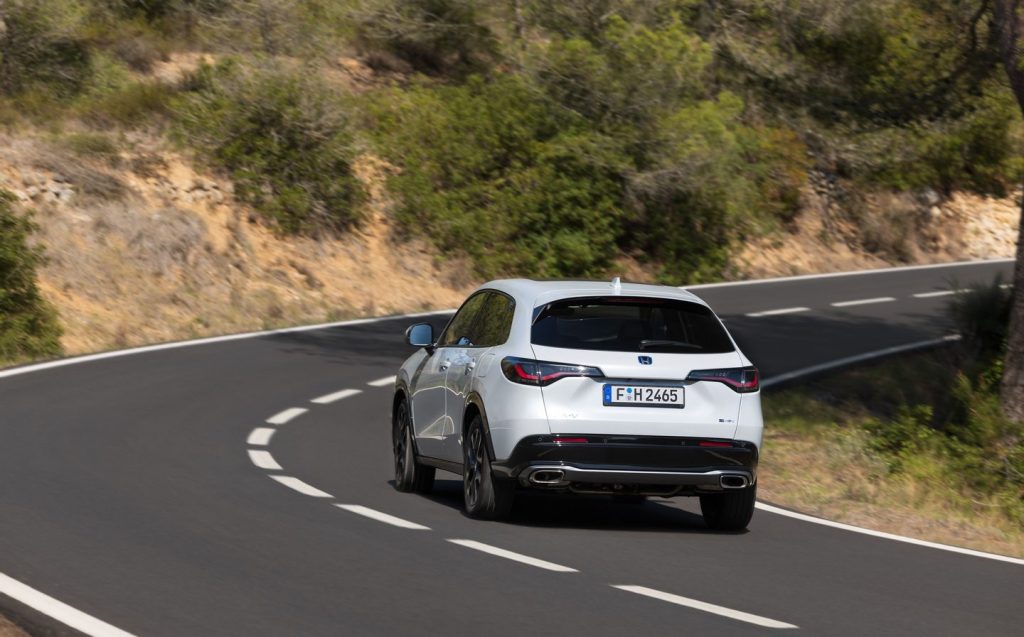
And while the ZR-V might not quite measure up to the standards of saloon cars, it isn’t far behind, and for a family SUV it’s remarkably planted and stable. The body roll is noticeable but well controlled, and though the car isn’t especially agile in corners, it always feels safe and secure.
It’s comfortable, too, with a very mature ride that ensures only the worst bumps really have an impact on the cabin. It’s no magic carpet but it’s hugely composed and sensible, dealing with any undulations with minimum fuss. Pretty much nothing seems to unsettle the car, and it gives you the impression it’s always looking after you.
Perhaps that’s partly down to the amount of tech included. Although there’s no all-wheel-drive option, there is a respectable amount of ground clearance and a snow driving mode for low-friction surfaces. It isn’t a replacement for all-wheel drive but, with the aid of some winter or all-season tyres, it should make the ZR-V competent enough when the white stuff begins to fall.
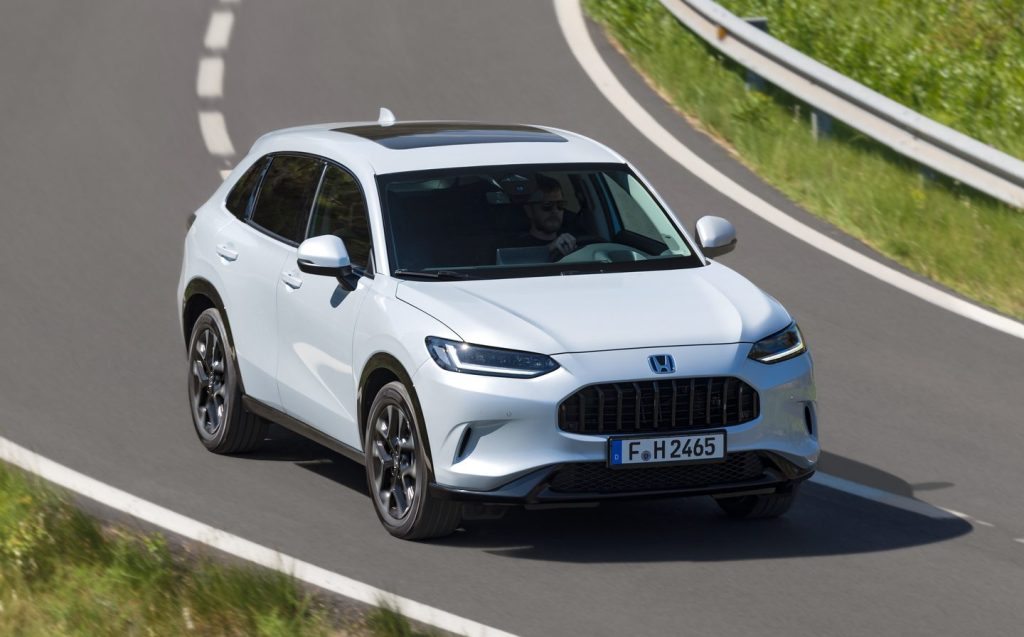
Pricing and on-sale date
The ZR-V goes on sale in July with prices starting at £39,495, and that’s a lot of money for a family SUV. In fact it’s about £6,000 more than you’ll spend on the cheapest Nissan Qashqai e-Power, which comes with a similarly clever powertrain.
That said, the ZR-V gets plenty of kit, with basic Elegance models featuring grey 18in alloy wheels, front and rear parking sensors and a rear-view camera. The touchscreen and digital instrument display are standard, too.
Moving up to the mid-range Sport takes the price to £41,095, and that car gets its own bumper design and grille, with gloss black trim on the windows and doors. There’s a part-leather upholstery design too, as well as sports pedals, wireless charging and a powered tailgate.
Finally, the range-topping Advance, which comes in at £42,895 gets full leather upholstery, a panoramic sunroof and a heated steering wheel.
Verdict: Honda ZR-V review
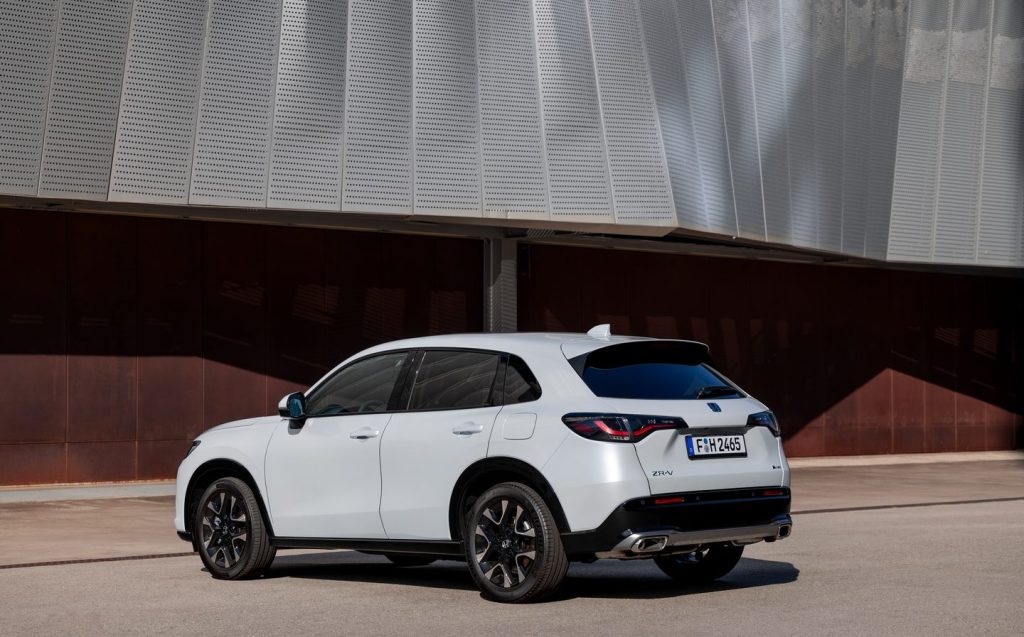
In many ways, the new ZR-V is brilliant. The powertrain is as refined as it is clever, the cabin is roomy and well built, and the driving experience offers comfort and stability. Yet with a high asking price, a cramped boot and sub-standard infotainment tech, the ZR-V is lacking in some areas that will really matter to customers.
Whether its attributes are enough to keep would-be buyers from looking elsewhere will come down to individual priorities, but it will likely put off enough of them to keep the Honda from becoming as popular as the likes of the Qashqai, Tucson and T-Roc. However, those to whom the ZR-V is suited will find it a more than adequate companion.
Related articles
- If you were interested in the new Honda ZR-V, you might want to see our review of the Honda Civic
- Interested in hybrids? Here are some of the best hybrid cars to buy instead of a diesel
- Check out our review of the Honda Civic Type R
Latest articles
- Seven great automotive events to visit this summer, from F1 to art and champagne
- Watch new Porsche 911 GT3 smash Nürburgring record for manual cars
- Skoda Elroq 2025 review: Czech carmaker can’t seem to miss with its electric family cars
- Five best electric cars to buy in 2025
- Should I buy a diesel car in 2025?
- F1 2025 calendar and race reports: The new Formula One season as it happens
- Zeekr 7X AWD 2025 review: A fast, spacious and high tech premium SUV — but someone call the chassis chief
- Denza Z9GT 2025 review: Flawed but sleek 1,062bhp shooting brake from BYD’s luxury arm
- Extended test: 2024 Renault Scenic E-Tech review


